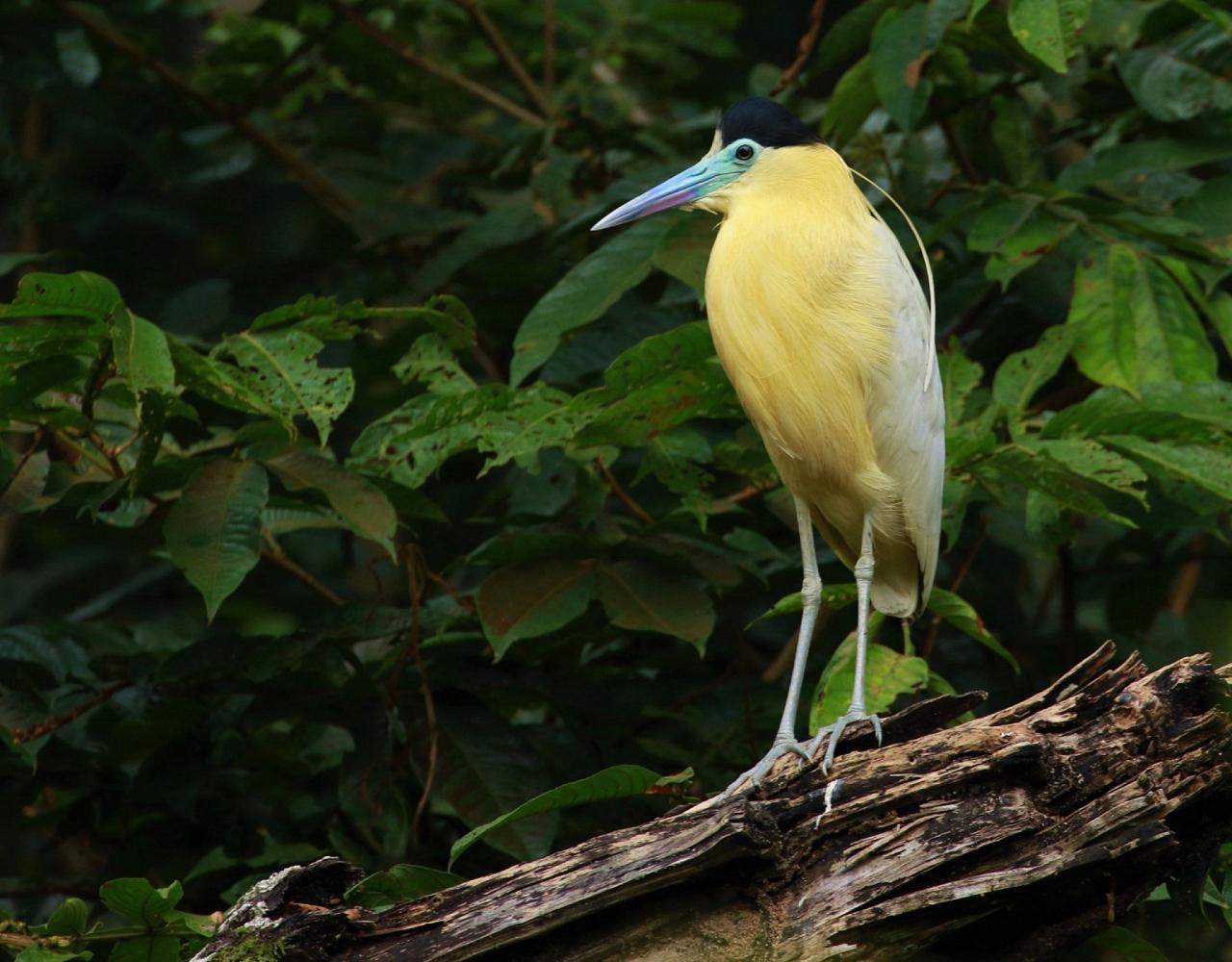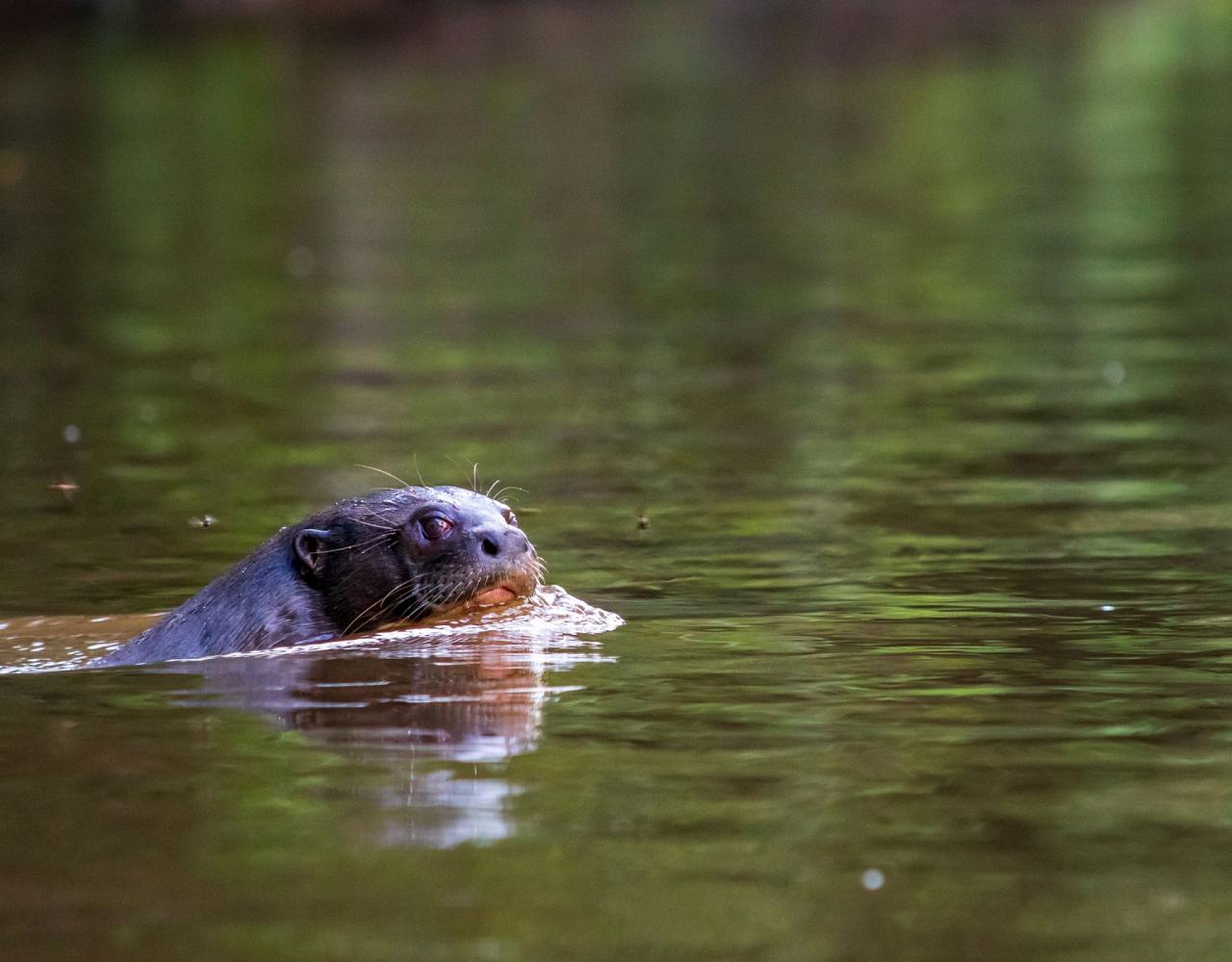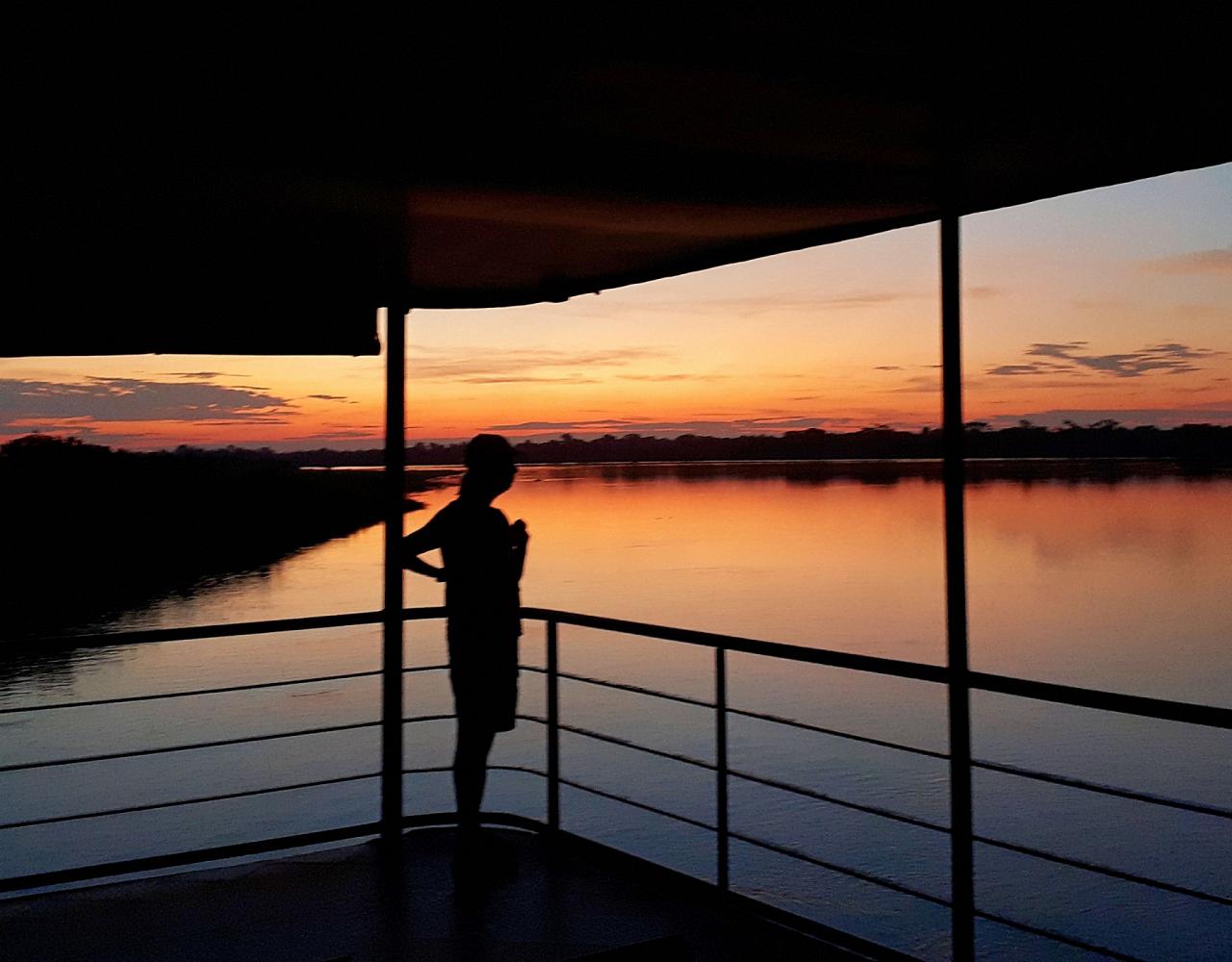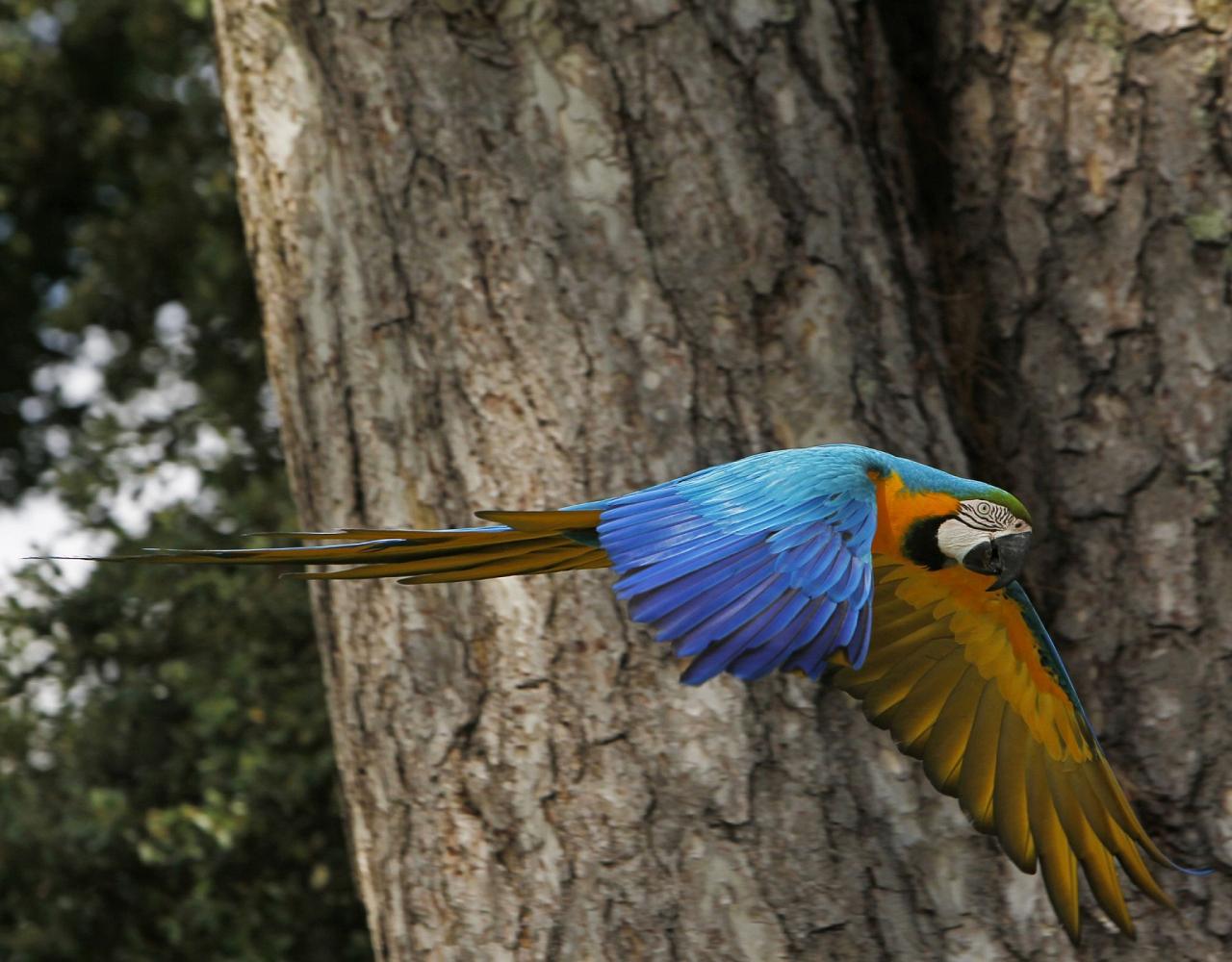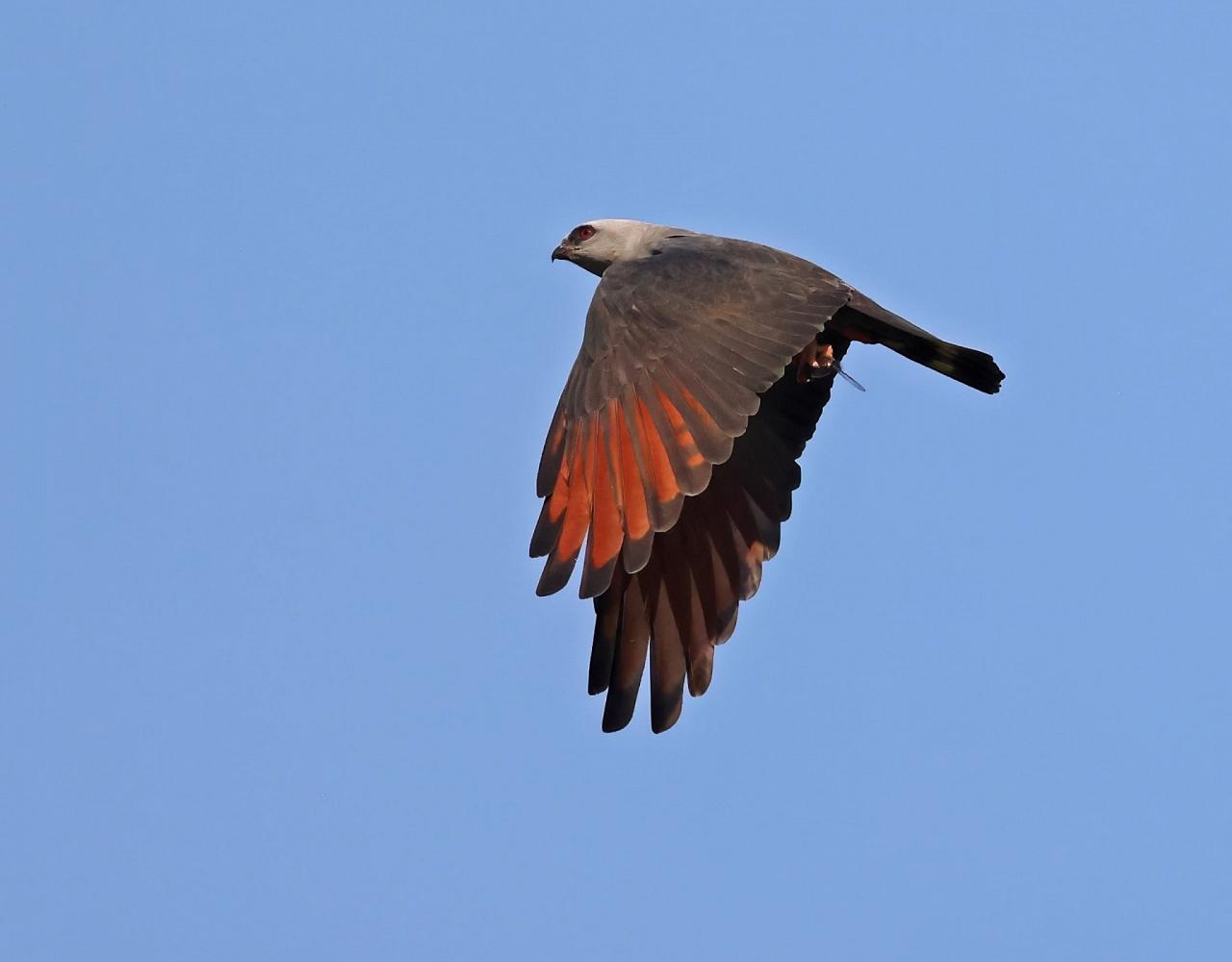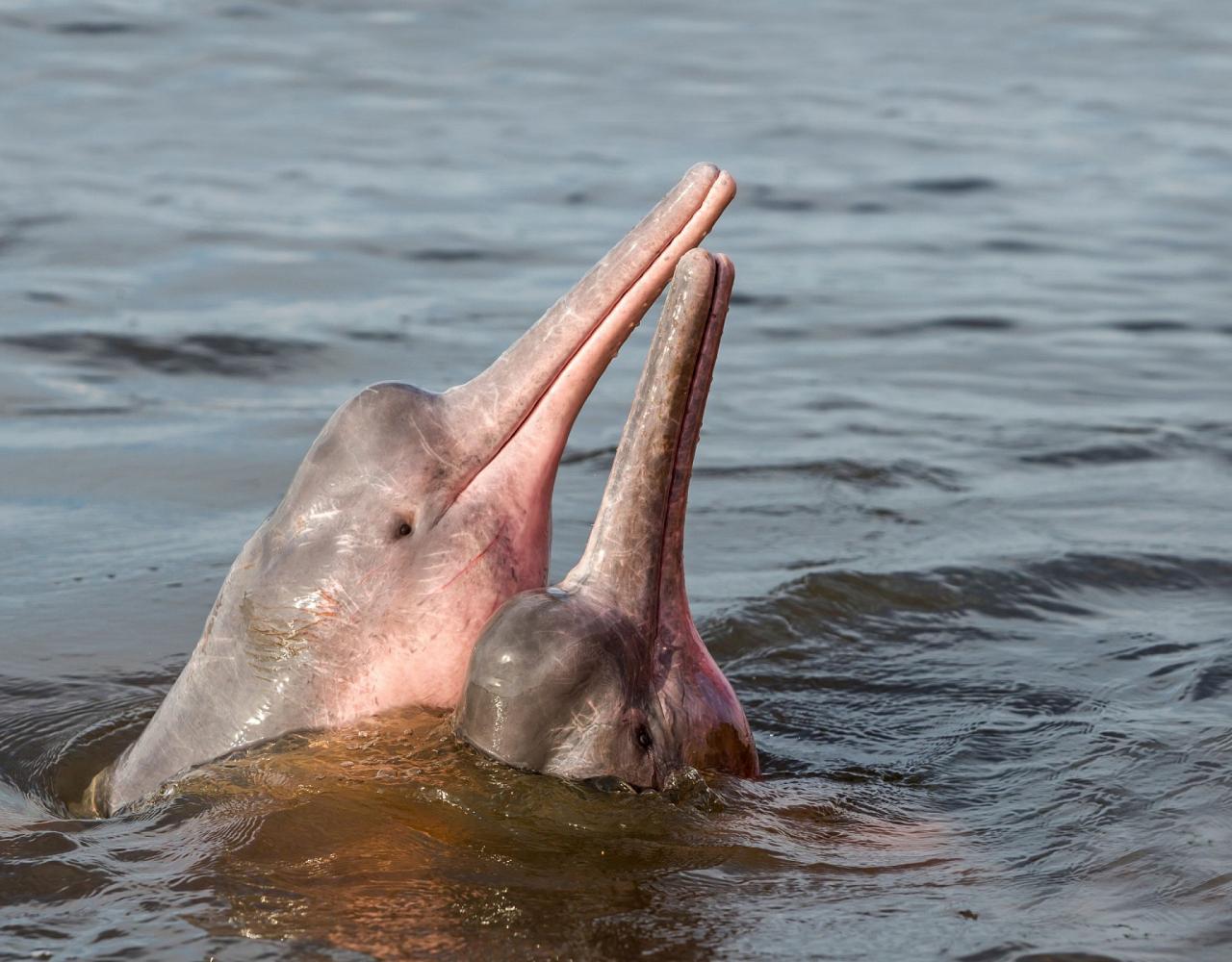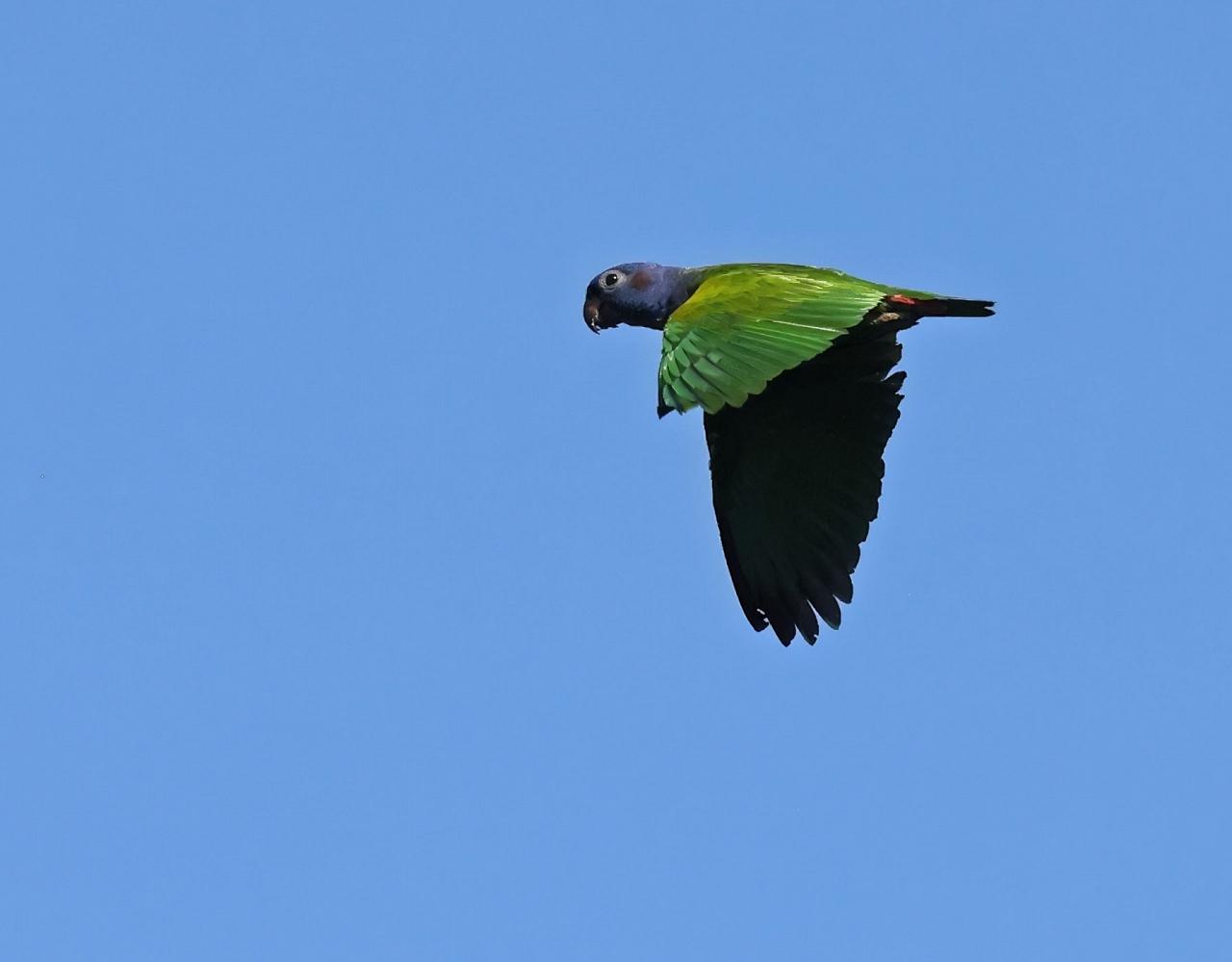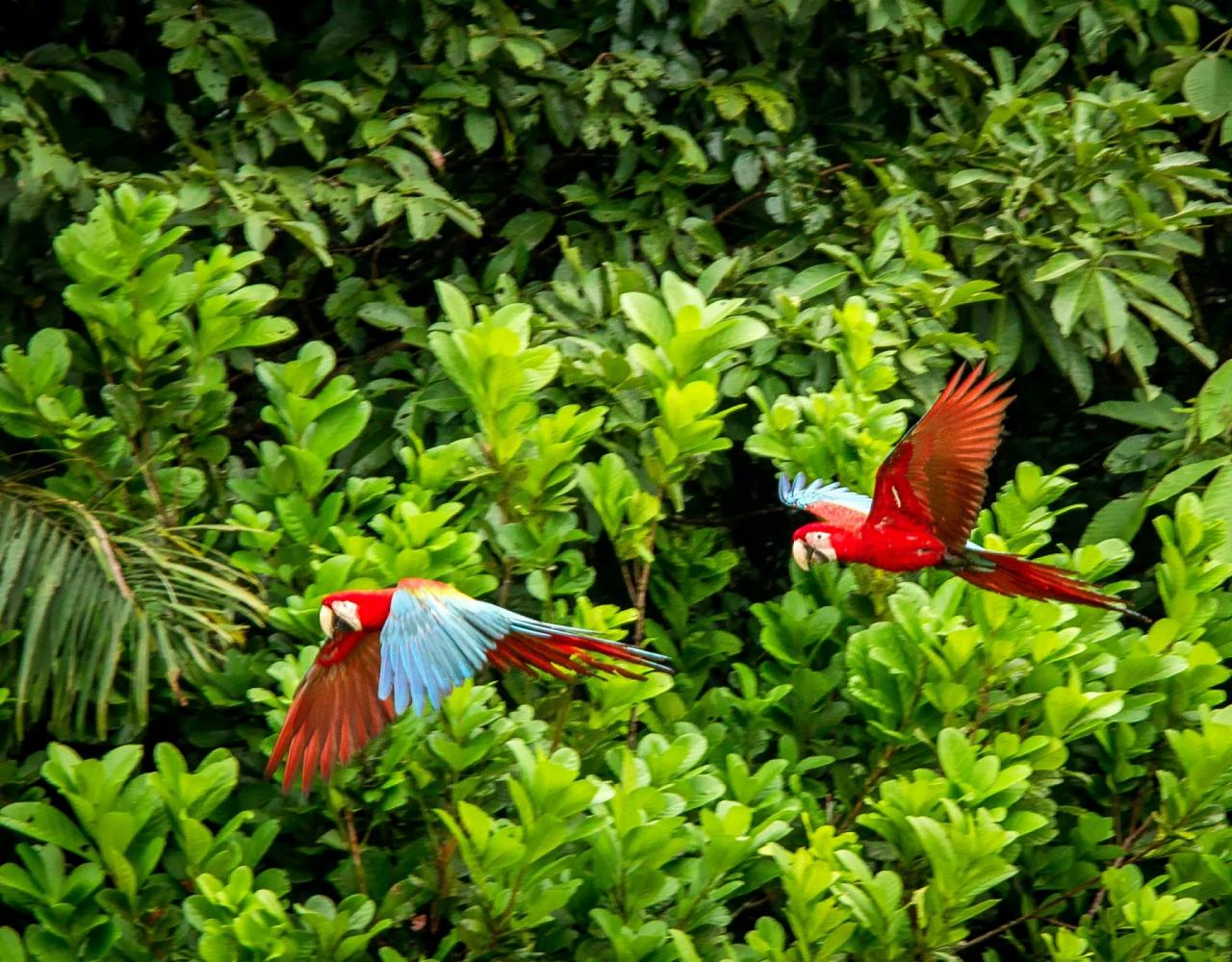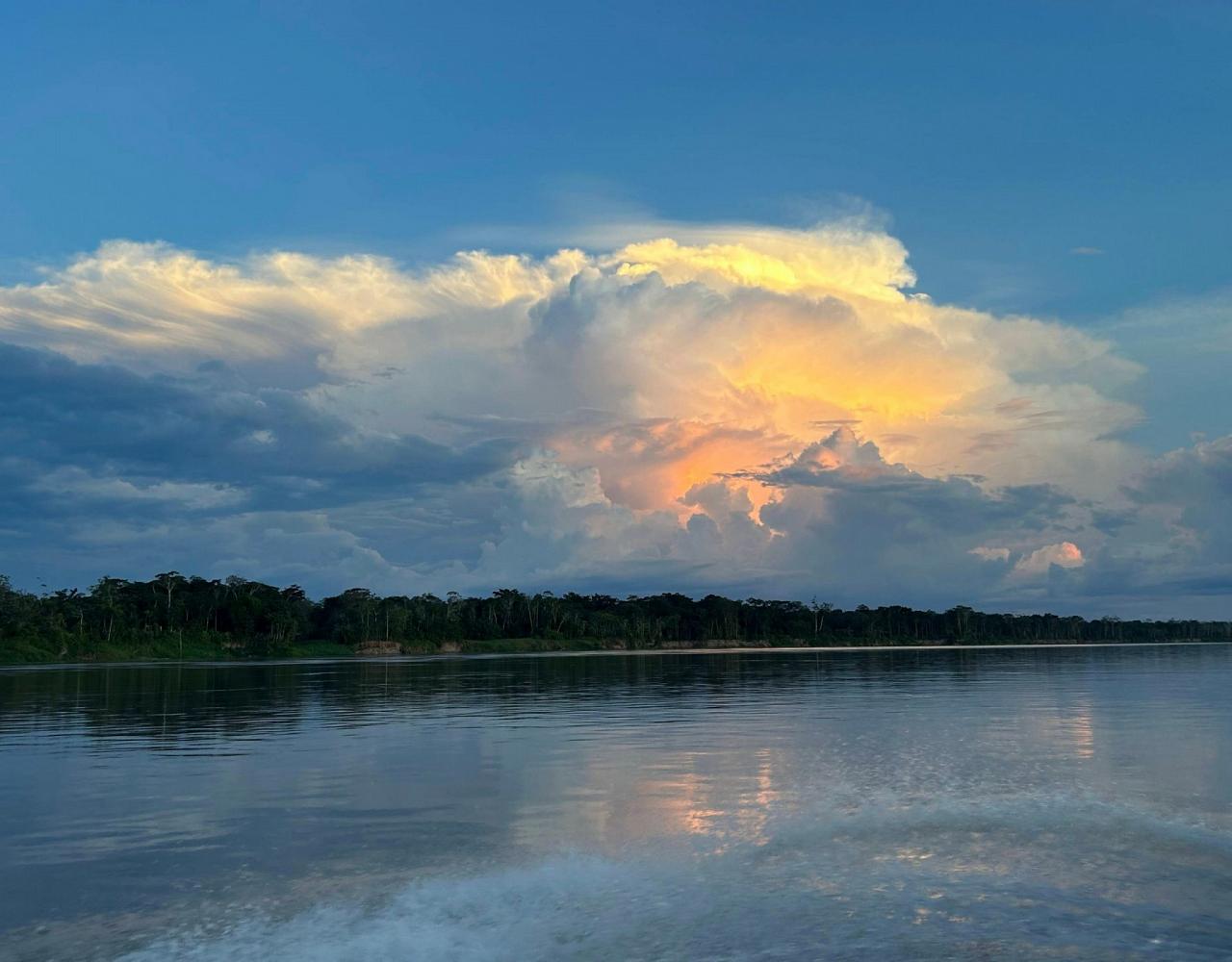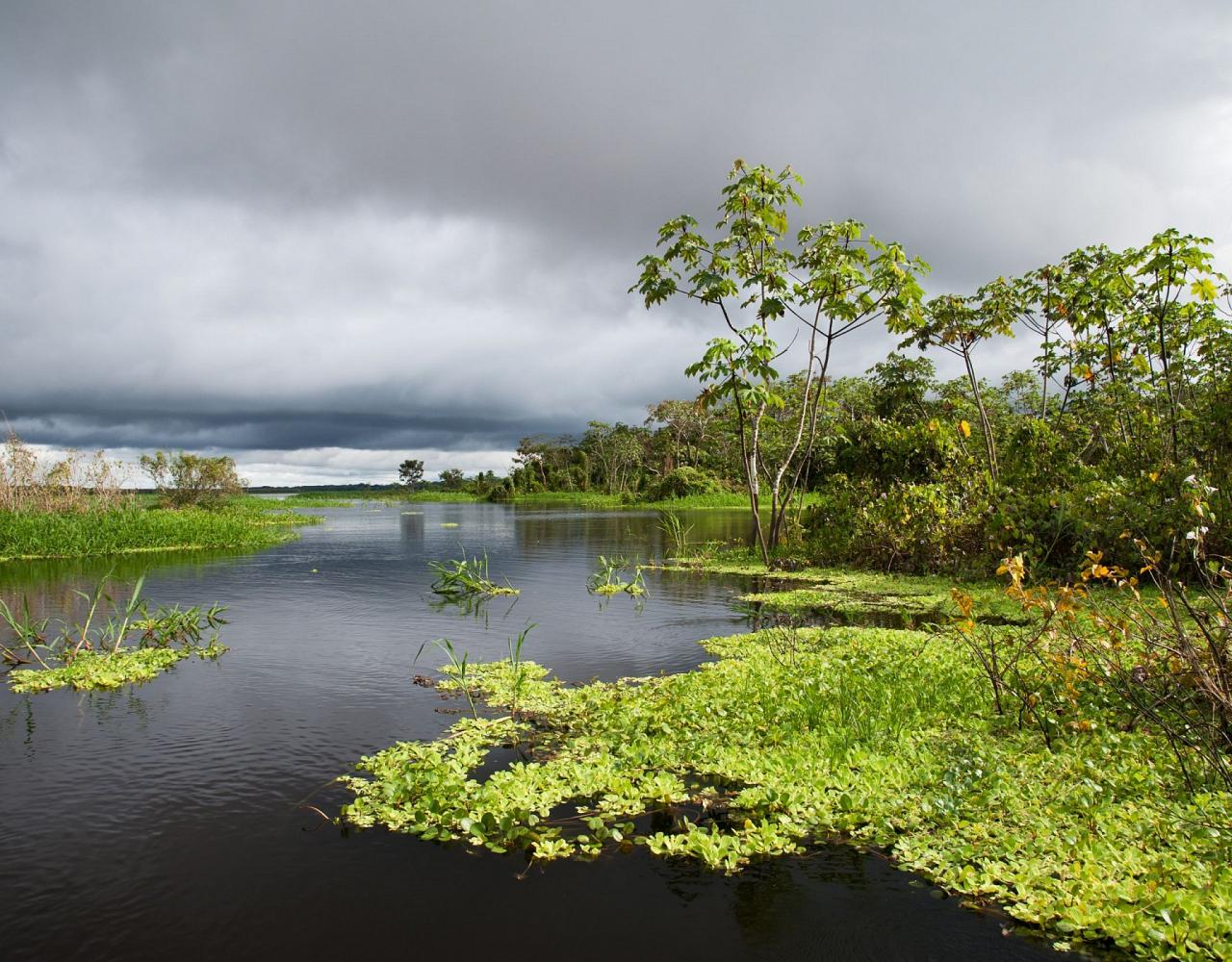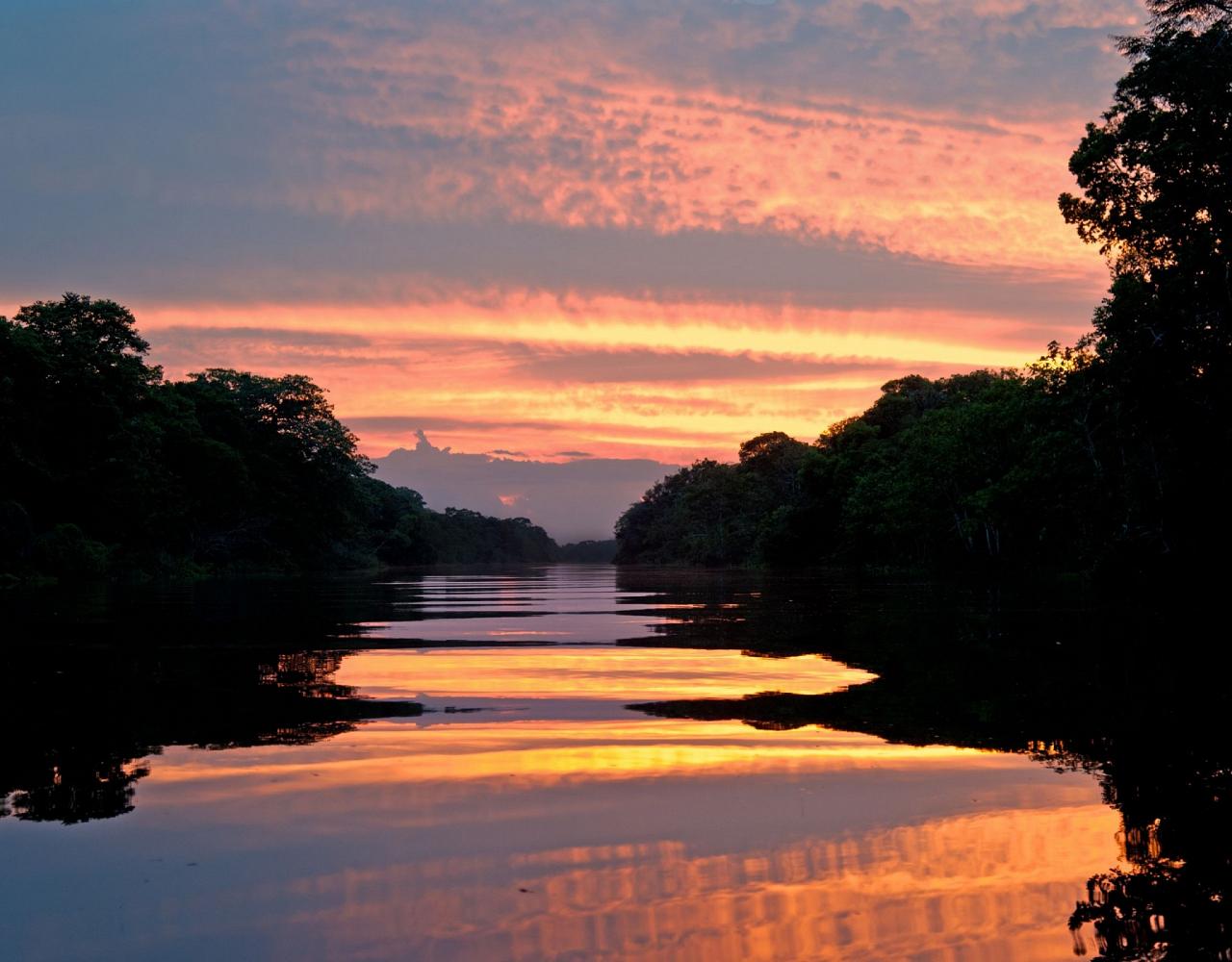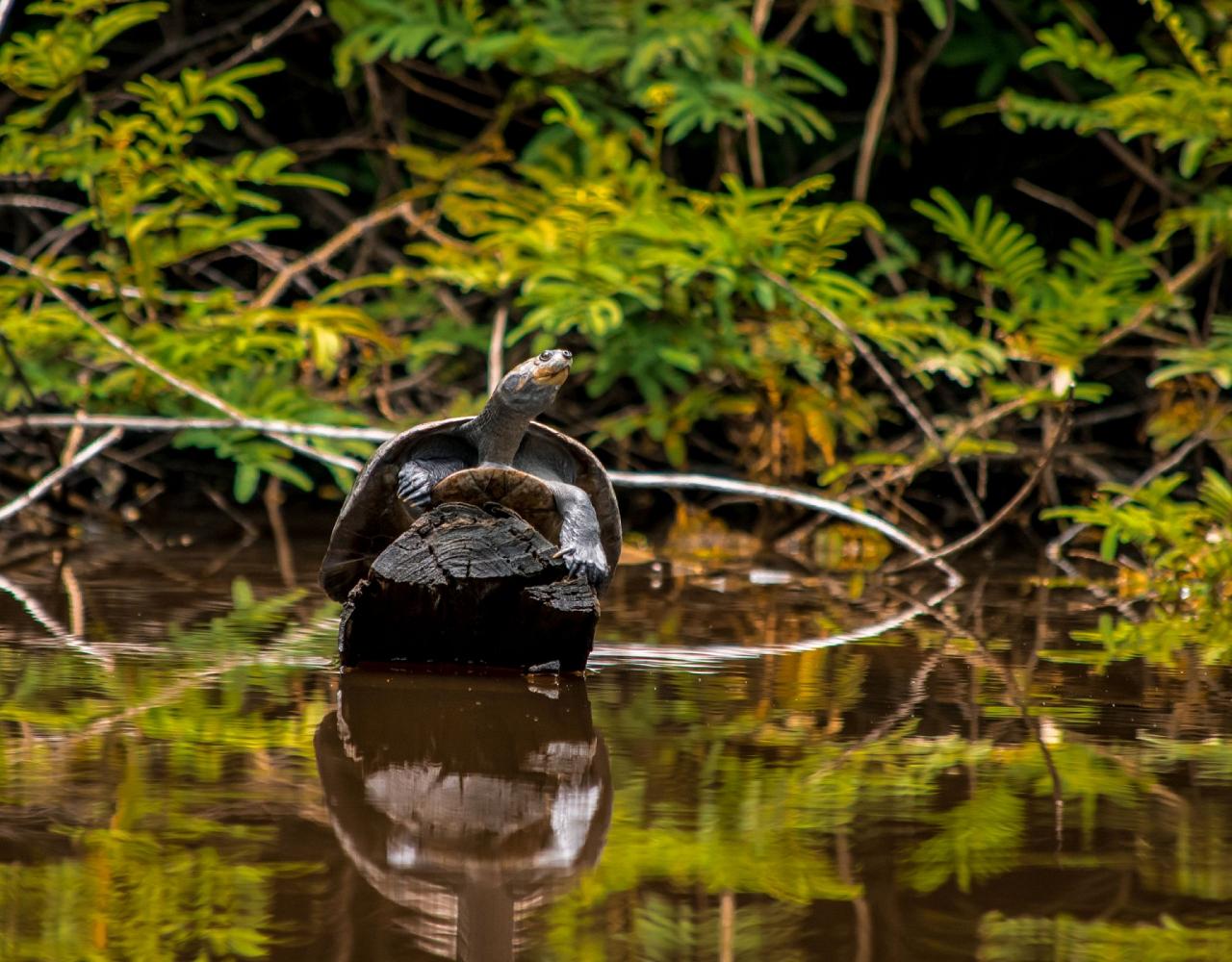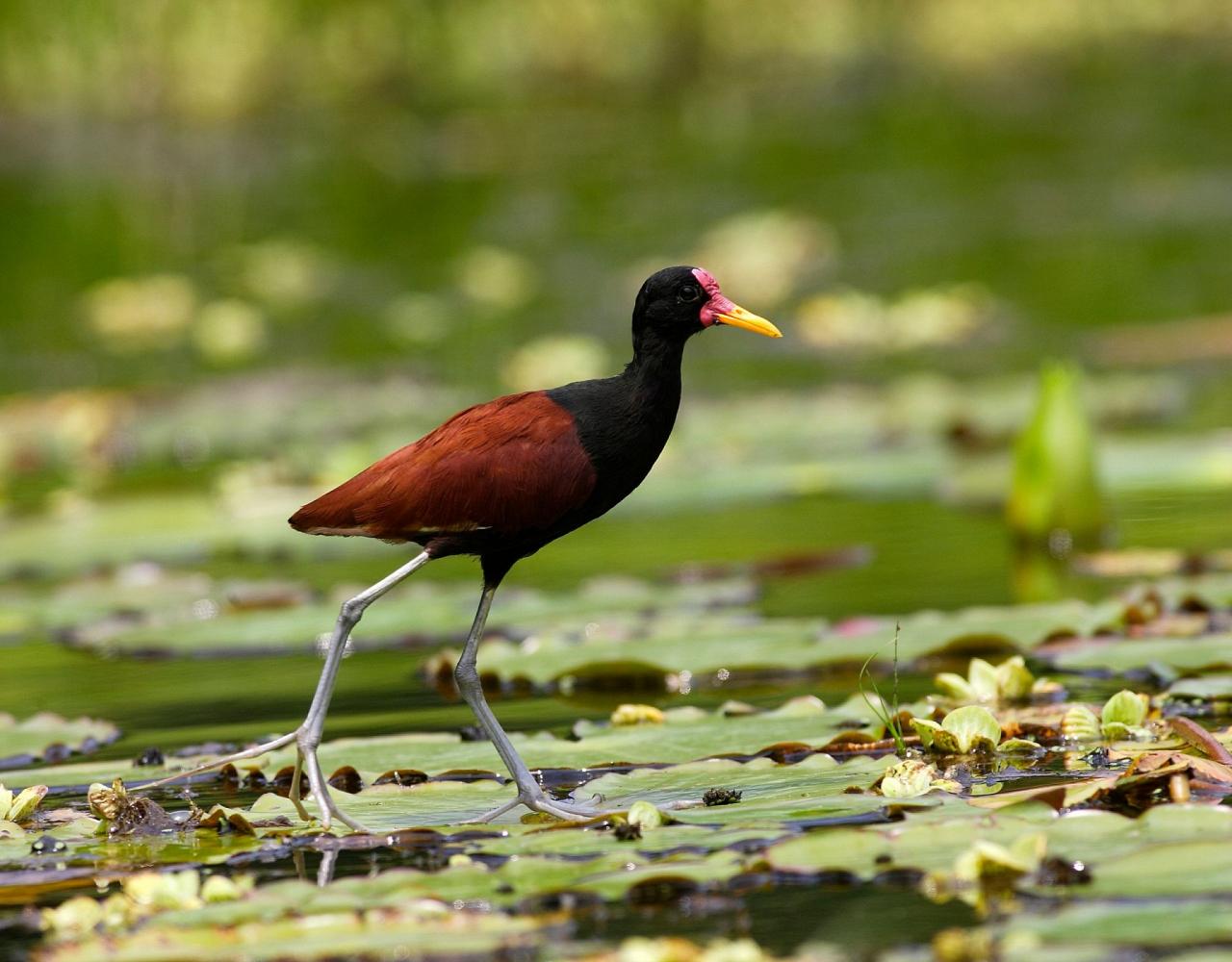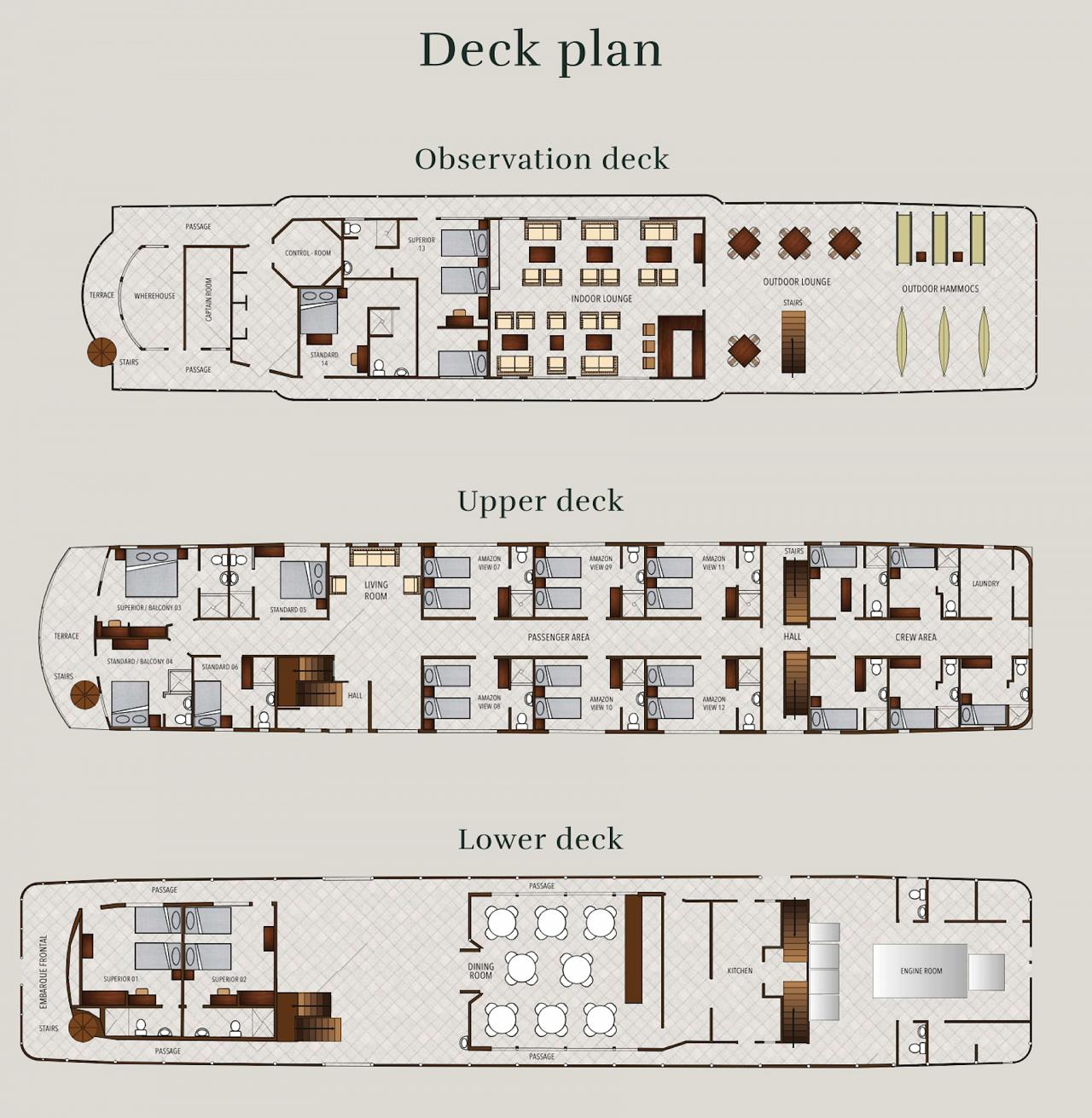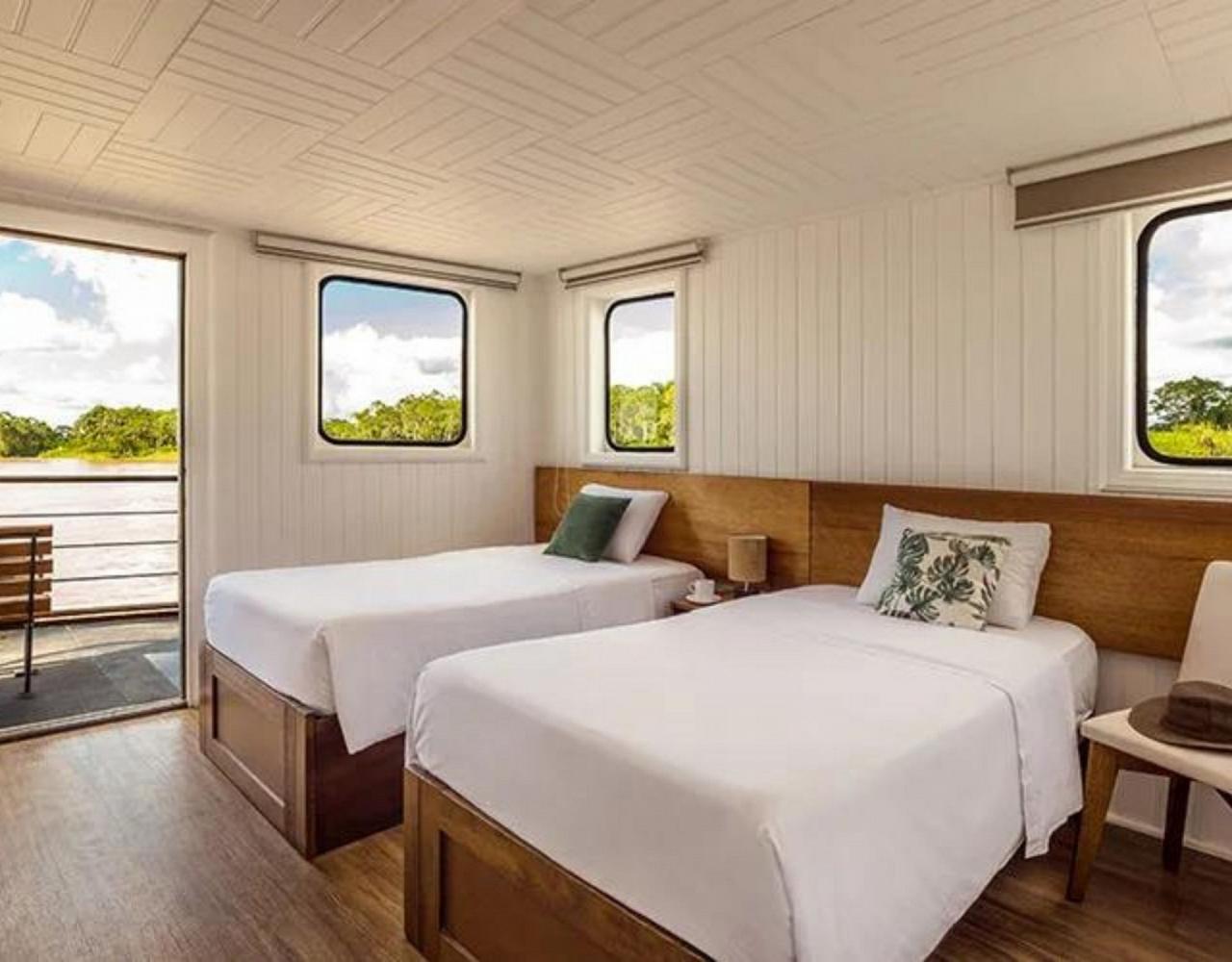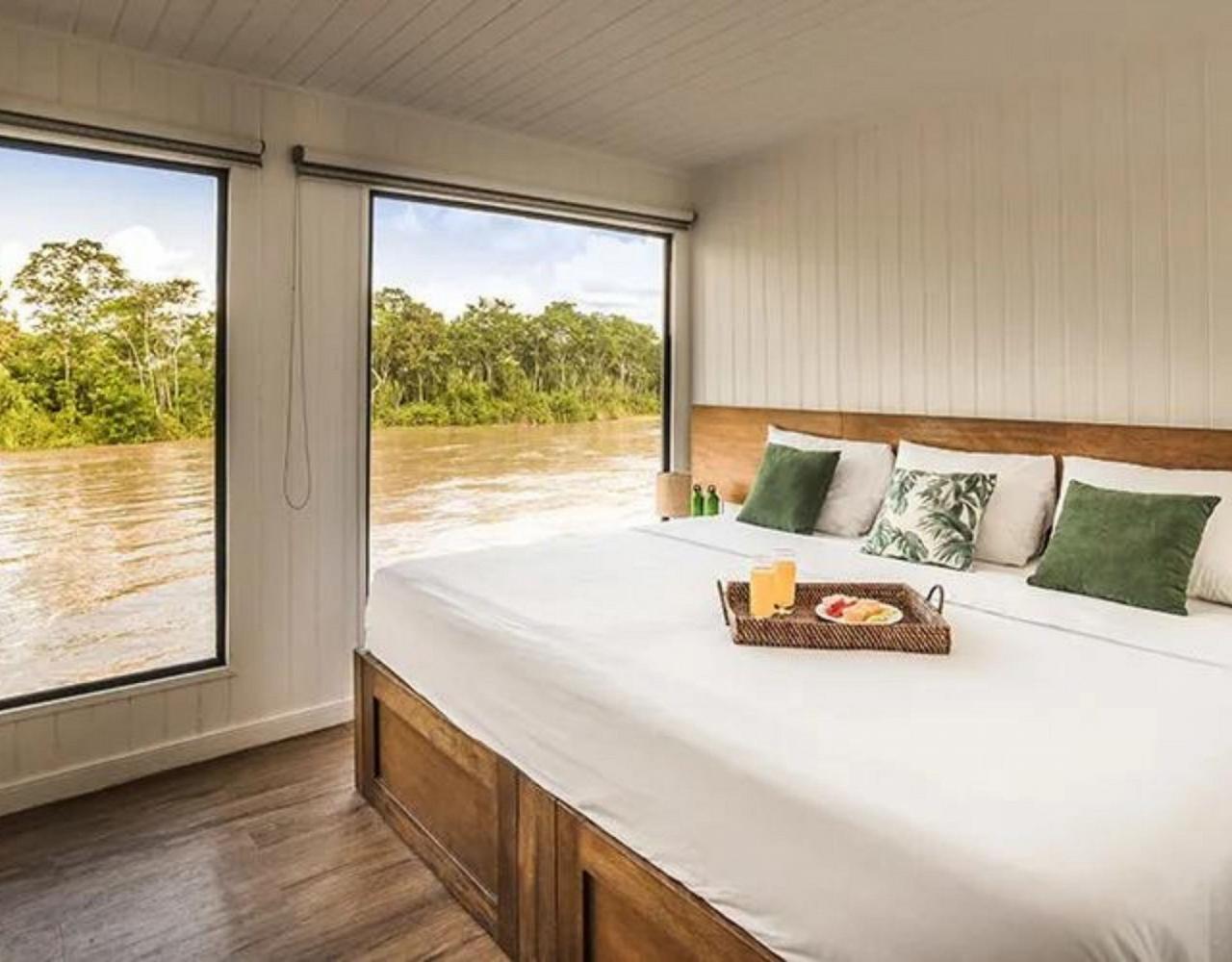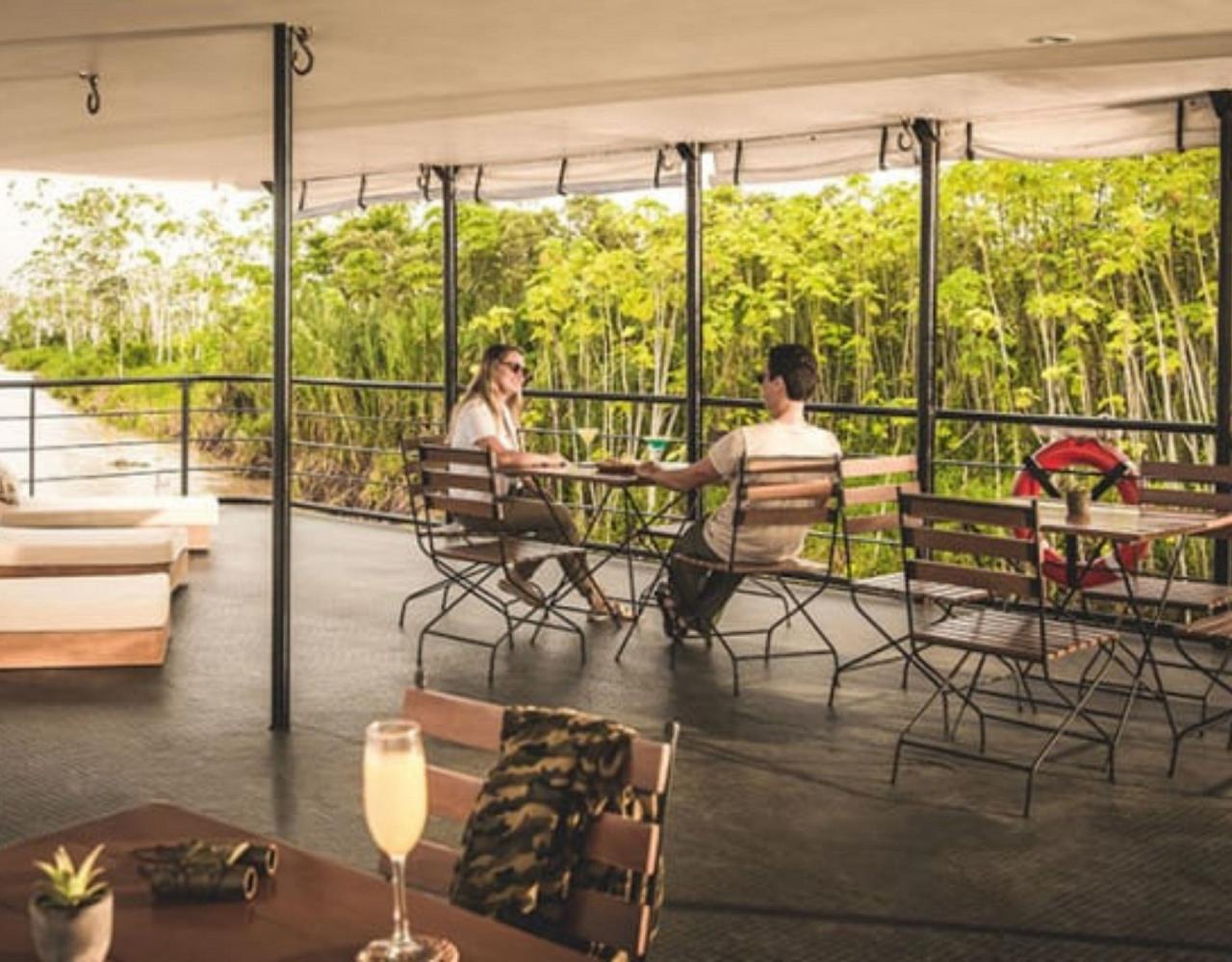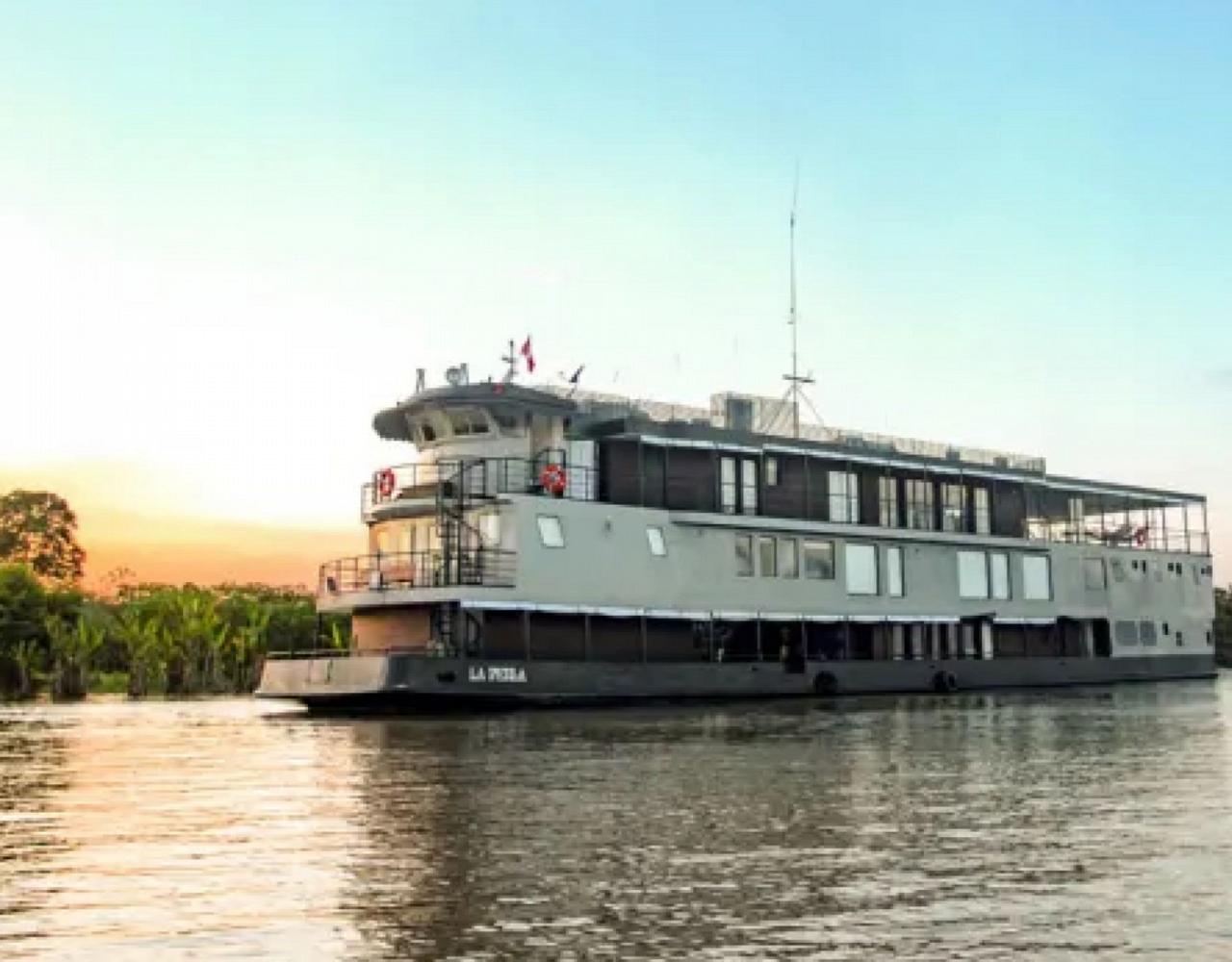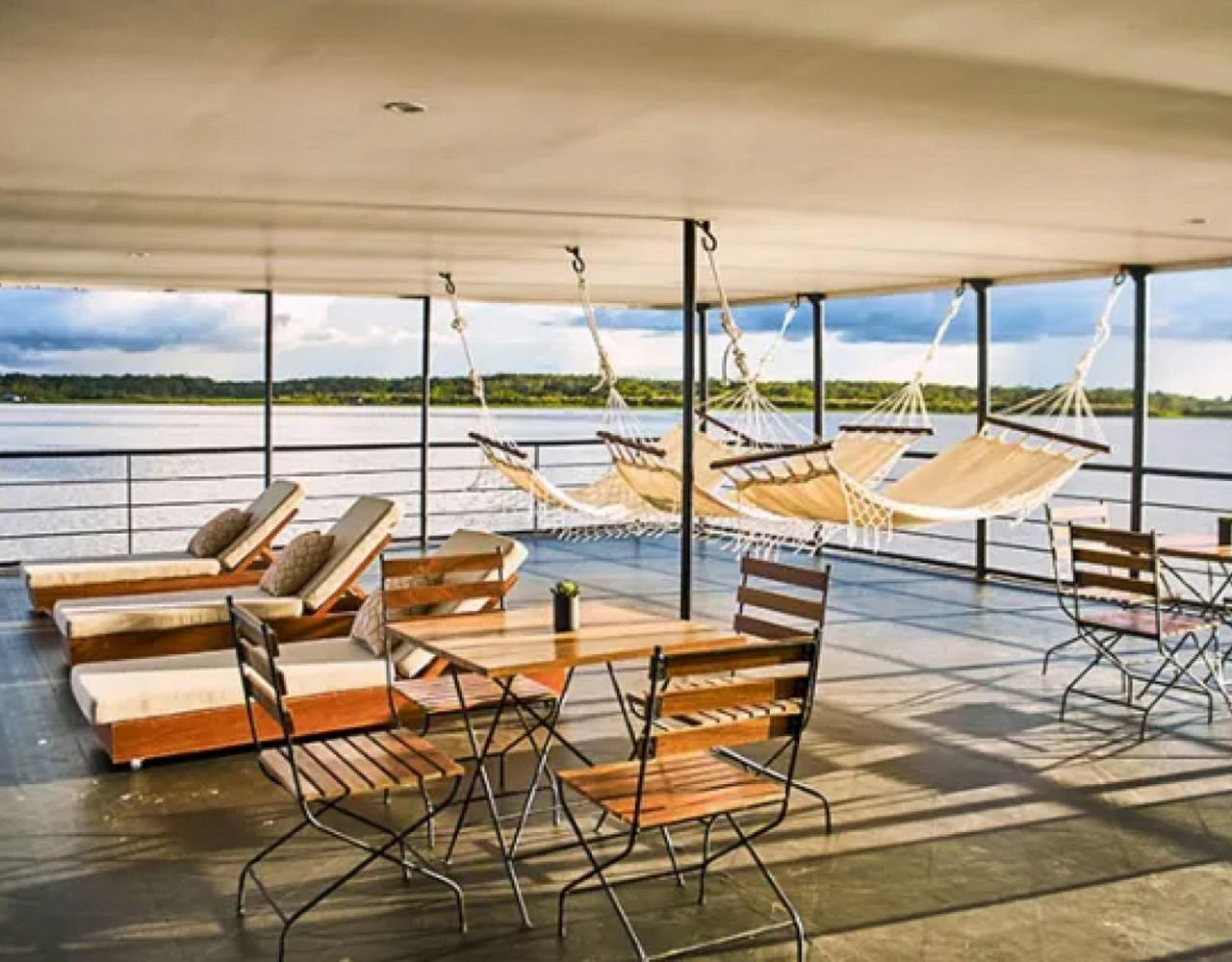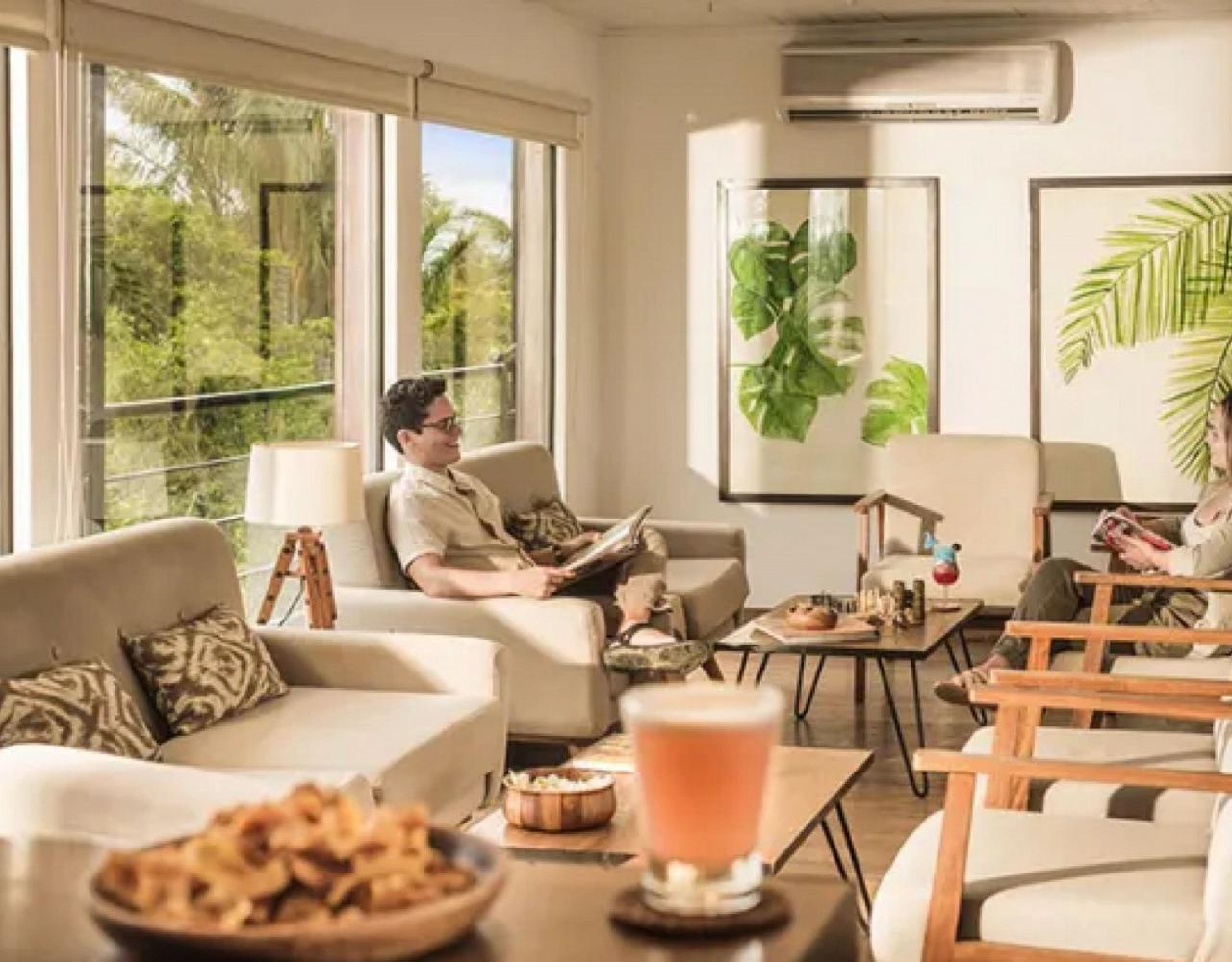- Overview
- Full Itinerary
- Extensions
- Photo Gallery
- Costing
- Travel Details
- Ship Information
- Trip Reports
- Guides
- Map
- Know Before You Go
Join Naturalist Journeys on our ever-popular Amazon River cruise. Travel far past the reaches of civilization, deep into the heart of the great Amazon rainforest. More than 1,300 bird species, 40,000 plant species, two species of river dolphin, and a plethora of primates are found in this lush, ever-changing realm known simply as “The Amazon.” Aboard the delightful and newly refurbished riverboat, La Perla, we explore the greatest Neotropical forest in the world during a journey full of discoveries. We have a dedicated bird guide aboard, as well as two very popular ecologists who bring this complex tropical realm into your grasp through well-crafted lectures and interactive field time. We do walk where water levels of the river make that possible, but most exploration is by small boats, which let us explore intricate tributaries in Pacaya-Samiria National Reserve, one of the wildest places left on Earth. From tiny frogs to majestic macaws this cruise is a nature immersion.
From its first trickle high in the Andes Mountains, the Amazon River winds more than 4,200 miles through South America. The river and its thousand tributaries snake past frontier cities and remote villages in six countries before spilling 500 billion cubic feet of water into the Atlantic. More than just water, the Amazon is the lifeblood of a rainforest that is both a biological powerhouse and an eclectic culture of shamans, farmers, and curious children.
Under a rich forest canopy, find an astounding diversity of birds: Over 1,800 species—more than 50% of South America’s recorded birdlife—have been spotted in Peru, and on this our trip excellent views of over 200 species is possible. This largest wetland reserve in the world provides the opportunity to see 13 species of primates, including Monk Saki, Red Howler, Saddle-backed Tamarin, and Squirrel Monkey. The rare Pink River Dolphin being a signature species in this region.
This exciting journey visits some of the wildest parts of the Amazon accessible to riverboats, wonderful floating hotels that keep us comfortable but close to nature. From Iquitos, Peru, we venture upriver from the port of Nauta (about an hour and a half from Iquitos) and spend time on the two tributaries that come together on our route to form the Amazon, the Ucayali (a 1200-mile tributary) and the Marañon (879-mile tributary). Our ship crew knows this region like you know your home terrain, so they can show us the highlights and yet stay flexible to wildlife sightings and opportunities as we cover a route they know works well. Depending on the week we may do one river first or the other, but the highlights featured in our itinerary, Maranon first, then Ucayali are be included going either direction. Two areas form the heart of the voyage, our time in the 8000 square mile Pacaya Samiria National Reserve, and time at the confluence area of these two great rivers, the start of the official Amazon. We have kept our journey’s focus on the cruise, but you can easily add time in Lima, Iquitos, or even venture on to Peruvian sites like Machu Picchu as add-ons.
Please note: We offer lodge-based trips that also visit the vast Amazon Basin, which has 17 tributaries longer than 1500 kilometers (930 miles), some longer than major rivers of the world. Nine countries share the basin, with particularly large areas in Peru, Brazil, Ecuador, and Bolivia. But this is our only cruise, and there is nothing like gliding into this watery tropical realm so comfortably, taking it all in from your floating hotel. We are sending two ecologists and a bird specialist to add to the abundant expertise of the local naturalists—what an opportunity to surround yourself with nature and learn!
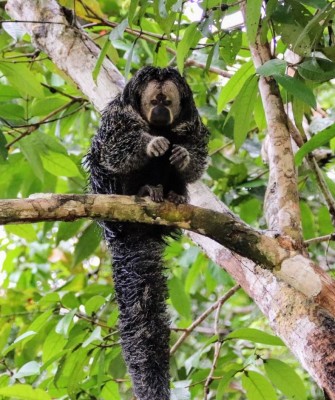
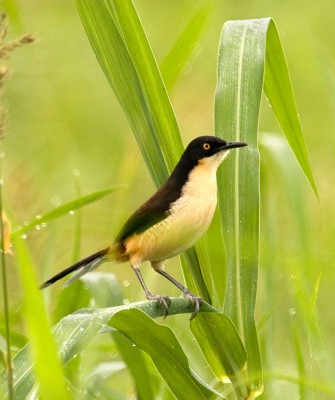
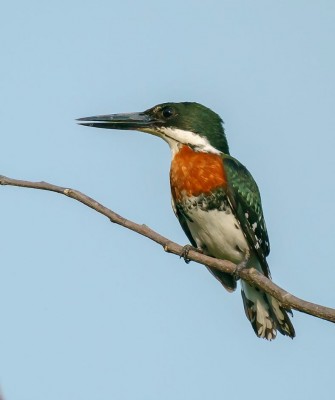
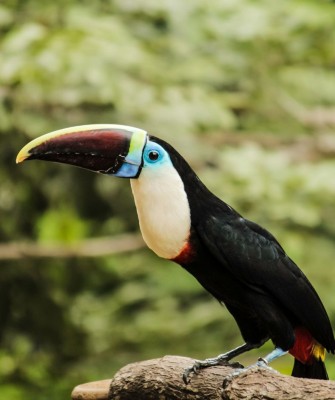
- “Exhilarating! A great adventure in a unique region.” — 2023 Traveler
- “It was a fabulous trip, full of birds, plants, spiders, snakes, and insects. I spotted a sloth on the canopy walk and was able to take a video of it eating. This was a treat.” — Judith Buckham , 2023 Traveler
Tour Highlights
- Discover the fascinating relationship between the river and the people who live along the banks
- Intertwine yourself in an atmosphere that pulsates with life
- Cruise in luxury on a riverboat, built especially for wildlife and bird observation
- Immerse yourself in the nature and culture of the Amazon with expert naturalists who ensure you learn about the Amazon’s plants, wildlife, people, and history
- Witness birds and mammals here so difficult to see in less-pristine areas, from macaws to guans, large woodpeckers to fabulous raptors, and so much more
- Have fun aboard the ship! Savor abundant birdlife, wildlife, and all that the Amazon offers while traveling in modern comfort
- Watch sunrise and sunset, listen to the dawn chorus of tropical birds, view memorable night skies
- Take a swim, fish for piranha, enjoy music provided by our ship crew, and fascinating lectures from your Naturalist Journeys hosts
- Add time in Lima, a fascinating historic city if you choose, or take our Machu Picchu extension
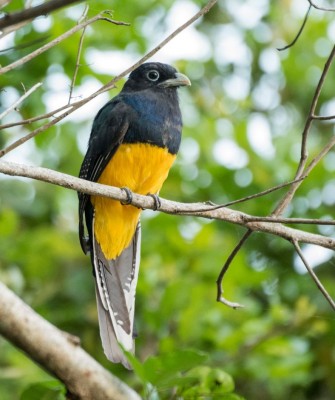
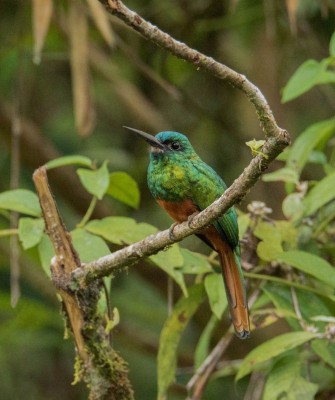
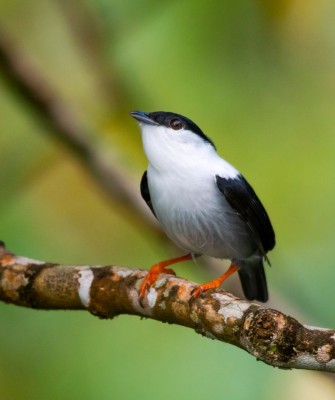
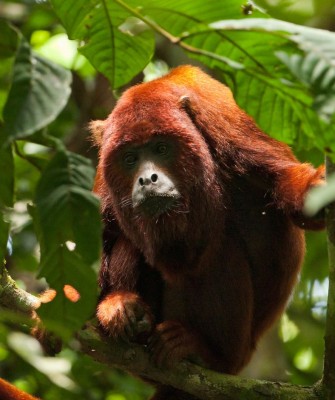
Trip Itinerary
Itineraries are guidelines; variations in itinerary may occur to account for weather, road conditions, closures, etc. and to maximize your experience.
Early Arrivals
We recommend that you arrive in Iquitos a day or two early; you don’t want to miss the boat! And this can be fun. Iquitos is a bustling city, the largest city in the world that is inaccessible by road. You can explore by three-wheeled covered Tuk Tuks, which serve as taxis, perfect for getting around in the hot and humid climate. There are historic buildings like the local cathedral and the Iron House and other structures dating from the turn of the century rubber boom era, a floating market and restaurant, and birding and people watching to enjoy along the riverfront promenade.
We recommend two different hotels so that you can meet up with other clients on the journey. Both can be booked online. These are:
The Doubletree by Hilton, overlooking the historic central Plaza de Armas, great if you just want to rest up with a pool, modern rooms, and city location.
Ceiba Tops, a tropical lodge resort with good birding on the grounds and some nice amenities to catch up from the flight. If you choose this hotel, it’s best to have at least two nights, and if you want to enjoy some of their outings, three nights. This is the first of Explorama’s three lodges, accessed by boat and located downstream from Iquitos. It is the most modern, comfortable and closest of the three, and has had a reputation as a great nature getaway from the starting days of ecotourism. You reach the hotel by boat from a local dock, they provide the transfer, and the staff takes great care of you throughout your stay.
It's twenty-five river miles downstream to Ceiba Tops Lodge. It is best known for its canopy walkway, an amazing network of swinging bridges between massive trees with platforms between the spans. With a stay of two or more nights, you can experience the walkway. The transfer in and out of the lodge is quick on a modern speed boat and you can start birding right away with possible Black—bellied Whistling Duck, both Lesser and Greater Yellow-headed Vultures, Cocoi and Capped Herons, a variety of egrets, Large-billed and Yellow-billed Terns, and other iconic Amazon species visible along the way. The lodge has comfortable rooms that offer hot water and air conditioning, a swimming pool, hammocks, public wi-fi, restaurant, and bar. Depending on the length of your stay, boat outings afield are available.
Why come early? First, you will be rested up to thoroughly enjoy the cruise. Additionally, if you were to experience flight delays on the start day of the cruise, it may be possible to catch you up via speedboat, but this service would incur an additional cost, so it is best to be safe and get there at least a day ahead of time. You can meet casually for dinner the night before with fellow travellers that have also come in early. If you are at Ceiba Tops, you can return by boat in time to meet up with the group for the transfer to Nauta and board La Perla on the cruise start date.
Sun., Nov. 22 Arrival in Iquitos, Peru | Board La Perla | Marañon River | Nauto Cano
Welcome to Peru! If you do plan to arrive today, you must arrive NO LATER than 9:00 AM. Representatives from our host company meet you at the airport in Iquitos. Most of the group is in early and we arrange pickups at the dock from Ceiba Tops returners, and from the Doubletree accordingly. Those overnighting can join a city tour of Iquitos with our local guides who share their insights. We expect a late-morning transfer of about an hour and a half to our embarkation at Nauta City. The plan is to have lunch aboard La Perla. If we are given a later embarkation time, we eat together at a restaurant in Iquitos or Nauta.
While in Iquitos, from the waterfront promenade known as the Malecon Tarapaca, there are birds to see among the various shops, restaurants, and lookout points. Watch the sky for Roadside Hawk, Plumbeous Kite, Yellow-headed Caracara, three species of vultures and several herons. Agile Large-billed Tern should be present and possibly Riverside Tyrant. In town, we may find Oriole Blackbird and Red-capped Cardinal, two real beauties, among the flowers and tropical plantings. In open fields look for Red-breasted Blackbird.
As we drive, keep your eyes peeled for Plumbeous and Ruddy Pigeons, Smooth-billed Ani, Great Kiskadee, and Boat-billed Flycatcher. Nauta is the community at the confluence of two great rivers, the Ucayali and Marañon Rivers, which we explore in the week ahead. Once aboard, after we settle into our cabins, we attend a safety briefing and drill, meet the captain and crew, and learn the layout of the ship. Notable on this voyage is that the ship is well equipped with gear to make your packing challenge easier. They have ponchos and rubber boots to borrow. Kayaks are available for those that like to paddle when we get to quiet waters.
From Nauta, we head out on the Marañon River, with skiff rides scheduled for the late afternoon as wildlife activity picks up and temperatures cool down. We explore a small creek (Nauto Cano) as well as the edges of several river islands, of which there are several types, and our naturalists provide background on the ABC’s of this vast ecosystem. Look up for birds, down for tree frogs (how about a polka-dot tree frog!), insects, and the amazing array of plants that give structure to the animal communities. You are here—experiencing it in person with so much to learn! Overhead, watch for toucans, parrots, and macaws returning to roosts at day’s end.
If it’s a pleasant night, we want to experience the magic of a tropical evening, full of sounds and sightings in our spotlights on a night skiff outing. We often stay out past dusk on the afternoon adventure to return by dark, hoping to see either Spectacled (the more common) or Black (the more elusive) Caiman, various species of frogs, some fantastic large insects, tarantulas, or even one of the local snake species. Ladder-tailed Nightjars sometimes come in to the lights and we listen and look for nightbirds such as Common and Great Potoos and Common Pauraque.
Accommodations on La Perla (L,D)
Mon., Nov. 23 Pacaya Samiria National Reserve | Yanayacu De Pucate | San Regis Community
On both rivers that we explore, we are on the edge of the amazing Pacaya Samiria National Reserve, the largest wetland reserve in the world, spanning 8000 square miles. Although scientific studies are far from exhausted, the Pacaya-Samiria is the known home to 450 bird species, 102 species of mammals, over 130 species of reptiles and amphibians, and countless plants. Our skiff excursions let us go into small coves, tributaries, and interesting sections of the river. We head out early today to take it all in, carrying a picnic breakfast with us. Our goal is to explore the Yanayacu River in Pucate, one of the best protected and preserved areas of the Pacaya Samiria National Reserve, one often visited by Pink River Dolphins. This species can be locally common in this remote realm, but globally are rare, and considered endangered due to threats from dams, pollution, and fishing practices that utilize nets. They are high on our list to see, pink (especially males and older individuals), curious and playful creatures, this is the largest freshwater dolphin in the world. Look for their long beak and bulbous head and learn more about their unique adaptations that let them navigate seasonally flooded sections of forest. They use echo location to hunt for crustaceans and other prey in the muddy water. Birds we look for today include Great Black Hawk, giant Horned Screamer, stunningly beautiful Capped Heron, White-eyed, Cobalt-winged and Dusky-headed Parakeets, and Red-bellied Macaw. There may be both Two-toed and Three-toed Sloths on any of our outings and we should hear and see Red Howler Monkeys, one of 13 primate species possible along our route. We are most likely to see are these, as well as Squirrel Monkey, Monk Saki, Saddle-backed Tamarin, and tiny Night Monkey that like to roost in massive tree holes.
This is a quiet area and we can take a ride in local canoes to feel the joy of paddling in this fascinating aquatic realm. There is also a safe area for swimming if you want to jump in. Back on the ship, we have lunch in the air-conditioned dining room, followed by some time to rest, after which our guides offer one of several lectures on this dynamic ecosystem and how it all works.
To be respectful of local communities who live along the river as part of the reserve, this is the day we most likely meet the shaman of the San Regis community, a wise woman from the native community who shares with us her knowledge about the rituals of the ancestors, medicinal plants, and the Amazon worldview. Our guides are our interpreters in case you want to ask questions or make comments to the shaman. After this authentic experience of reflection and spiritual exploration, we continue with the ceremony of planting a tree, as a contribution
to caring for the environment. Yellow-rumped Cacique may have their long hanging nests here and if so, they put on quite a display. Blue-gray Tanager (sporting white wing patches here on the Amazon), Palm Tanager, and Bananaquit are often found around local villages.
Back on the boat, you can relax with live music at happy hour while we wait for dinner. After eating, the guides recap highlights of the day and go over plans for tomorrow.
Accommodations on La Perla (B,L,D)
Tues., Nov. 24 Pacaya Samiria National Reserve | Amazon Natural Park | Shiriyacu
Early dawn in the Amazon has a special charm, it is the perfect moment to sight many animal and insect species. And where we can we offer optional pre-breakfast outings. The Pacaya Samiria has over 450 species of birds, and while we won’t see them all, the more we’re out, the more we see! Barred Antshrike call like alarm clocks, Piratic Flycatcher hunt from high perches, and both tiny Green and giant Ringed Kingfishers are actively hunting. Seeing more secretive Black Caracara, Green-and-rufous Kingfisher, Dark-breasted Spinetail, as well as the bolder Black-capped Donacobius, Spotted Tody-Flycatcher, and White-headed Marsh Tyrant are all possible. We should find Woodstork and the giant Jabiru. Beyond birds, there are social spiders, crazy looking katydids, a treasure trove of biodiversity that our keen-eyed guides are poised to search for. Our destination is likely the Iquitos Creek, a privileged area for sighting numerous species, some unique to this region. Back on board, a lavish buffet breakfast is served.
After breakfast, we start a walk through the jungle at a community effort for tourism, the Amazon Natural Park. Walking on terra firma here, we hope to see the antics of Yellow-billed Jacamar and we watch for army ants, butterflies, and large insects, and we should hear the shocking call of Screaming Piha, a bird associated with these forests. Our goal is to experience the hanging bridges, a set of structures stretched out on top of the trees that allow us to experience a canopy walk and admire the richness of the jungle from a bird’s eye view. We also can see fruits of the forest, myriad in color and form, that help to power the amazing diversity here. From the canopy, we hope to see Canary-winged Parakeet, Scarlet or Blue-and-gold Macaws, or tiny species of a mixed flock if we are lucky.
We return to the ship for lunch on board and time to rest before the next departure.
In the afternoon we return to our skiffs to explore the Shiriyacu, a quiet blackwater tributary of the river. Our guides find the perfect location for piranha fishing, using local equipment and techniques. This area provides us with another spot to witness playful Gray and also Pink River Dolphins. Bird sightings abound and might include Black-collared Hawk, Wattled Jacana, or an iconic species of the Amazon, the archaic-looking Hoatzin. Watch for huge Green Iguanas amid Strangler Figs and Moriche Palms.
Upon returning to the ship, we can relax, enjoy another informative lecture from our hosts on ecology and animal behavior. One talk has a focus on reptiles and amphibians of the region, and how some of the venomous ones have given rise to useful medicines. Another features the amazing adaptations of social insects, others are broad-reaching topics of ecology. After all this stimulating information, we complete the day with a delicious dinner on board. Lectures occur throughout the week, and are held before or after dinner as time allows, based on what fits with each day.
Accommodations on La Perla (B,L,D)
Wed., Nov. 25 Gasparito Creek | Amazon River | Yacapana Creek
Early in the morning, we leave by skiffs to explore Gasparito Creek, a fantastic area for bird and primate watching. By now all of our group be is helping to spot mammals, birds, anything that moves—and the sightings comes fast and furiously! We return for a great buffet breakfast, then continue with a boat excursion to Marayali lagoon, another jewel to appreciate the Amazonian biodiversity, observe numerous Victoria amazónica locally called “Victoria Regias,” massive-leafed water lilies that are the largest aquatic plants on the planet. This is a good area to find colorful Scarab Beetles and on one voyage we had Red-tailed Boa Constrictor here. Green Ibis, Snail Kite, Russet-backed Oropendola, Black Nunbird, and Hoatzin may be found here too, and with luck we could find Chestnut-eared Aracari and flocks of White-winged Parakeet. Along sandy stretches of the river islands we look for Lesser Hornero and resting Black Skimmer.
Before noon, we return to the ship for lunch on board and then we have time to rest before the next departure to Yacapana Creek, in search of new imposing landscapes and more emblematic species of the Amazon. Giant Ceiba trees of primary forests are memorable; clustered Cecropia trees are early successional species and attract Three-toed Sloths.
We linger this afternoon to enjoy the wonderful light and the incomparable colors that unfold in the sky of these latitudes during sunset. Few experiences compare to contemplating the endless colors
on the Amazonian horizon, letting the night come and to listen to the prodigious symphony of millions of life forms that populate the forests and waters of these jungles. It’s a terrific time for spotting wildlife, and with luck we may find caiman, a group of Capybara, with real luck a group of Pygmy Marmosets, or some night birds.
Back on the boat, we enjoy a peaceful night with music and a replenishing dinner.
Accommodations on La Perla (B,L,D)
Thurs., Nov. 26 Ucayali River | Yarapa River | Vista Alegre | Thanksgiving on the Amazon—Fun!
At dawn, we board the skiffs to trace the banks of the Ucayali River, watching for birds and monkeys such as Red Howler and White-fronted Capuchin above us and along the shore, Yellow-spotted Turtle. At every turn we find a true spectacle of color and life in the heart of the forest. We follow up narrow channels where spotting more secretive species is possible. On past voyages we have been lucky to find Red-and-white Spinetail and both White-eared and Paradise Jacamars.
Back to a delicious breakfast buffet that offers a daily selection of traditional dishes, Peruvian specialties, freshly baked homemade products, and a variety of fresh juices made with exotic fruits that can only be found in the jungle.
After breakfast, we start the full morning excursion by boat, this time on the Yarapa River, an area ideal for spotting toucans, parrots, macaws, iguanas, sloths, and monkeys high up in the trees. Learn more about the subtle differences in habitats here from the várzea and to igapó and fully mature forests we encounter along the way. Cornell University has a research facility, in coordination with a small locally-run lodge on this river, where student groups come intermittently to observe the abundant biodiversity. So many species are possible along our route, and we may find sloths, squirrel monkeys, both Long-billed and Strong-billed Woodcreepers, Plum-throated Cotinga, some of the region’s big woodpeckers such as Cream-colored or Crimson-crested Woodpeckers, Lemon-throated and Scarlet-crowned Barbets, various antwrens and antbirds, Drab Water Tyrant and other flycatchers, and so much more. The whole concept of seasonally flooded forests and how they work takes a while to sink it—imagine fish that are fruit dispersers for trees!
Back aboard the La Perla, enjoy lunch al fresco on board followed by a break, and then a talk by the local guides on Amazonian culture in preparation for our visit ashore. This afternoon, there is the opportunity to visit the town of Vista Alegre to meet the native community and learn about their customs, medicinal plants, natural plant dyes used for weaving, and more about their day to day life. Having our ship’s local guides as interpreters and translators helps us to connect in a meaningful way on this Thanksgiving day.
Upon return, you can enjoy live music for a Thanksgiving with a tropical flair during happy hour. Watch for Fishing Bats off the prow, and for Mealy and Festive Parrots to fly overhead in the nightly parade to roost sites. Relax on deck to admire the stars, this is the life!
Accommodations on La Perla (B,L,D)
Fri., Nov. 27 Ucamara | Confluence – The Origin of the Amazon River | Pirana Cocha | Casual | Marañon River
We awake this morning on the Amazon River, seeing some of the ever-changing panorama of jungle life, as our boat continues upriver. Small villages dot the shoreline, and channels weaving through island mazes provide close-up views of a variety of birds. The confluence of the Ucayali and Marañón Rivers is famous as the beginning of the Amazon River in Peru. Amazingly, we are about 2,400 miles from where the river flows into the Atlantic. The river drops only about 350 feet the entire way!
We head off in the skiffs, and the outstanding Piraña Cocha area is featured today. We still have many species to look for. With luck we may find raptors such as Laughing Falcon, Gray-headed or Slender-billed Kites, and Great Black or Slate-colored Hawks. We listen and look for both Amazonian and Black-tailed Trogons, Masked Tityra, Bare-necked Fruitcrow, and mixed flocks that may include colorful Thick-billed and Purple-throated Euphonias, and Turquoise, Paradise, and Masked Crimson Tanagers.
Back on the boat, we enjoy lunch. Our Naturalist Journeys hosts give a great wrap-up lecture that helps to pull together your significant sightings. Our final adventure is a walk through the winding jungle trails located at the beautiful area of the Casual along the river. Being on terra firma (dry land that does not flood seasonally) lets us look more closely at leaf shapes, walking palms, toads that mimic dead leaves, frogs including several species of tiny poison dart frogs, millipedes and centipedes, and countless invertebrate species. On a previous voyage both Bird-eating and Pink-toed Tarantulas were found. Being on solid ground is also a great way to stead your binoculars on monkeys and birds. The village of San Jose de Sarapanea is here, where if you wish you can purchase local handicrafts including carved palm nuts made by the local women artisans and in this way contribute to their local economy.
As we return to La Perla, there is a bit of melancholy as we end our voyage, and contemplate our last majestic Amazon sunset. Listen to some live music before the final presentation of the crew and farewell dinner.
Accommodations on La Perla (B,L,D)
Sat. Nov. 28 Nauta | Iquitos | Airport
This morning begins quietly with breakfast on board, but becomes exciting with a visit to the city of Nauta, the second largest in the region. Upon arrival, we reach the city market, where you can interact with locals and learn about the particular commercial circuit of the region. We visit the stalls of typical food, crafts, aphrodisiac drinks, and many more—a true immersion in the life of the Amazonian population. And quite a contrast to the peaceful natural realm beyond!
Back on the ship, we proceed to disembark. On the way to the airport, we visit Amazon Forever Bio Park, also known as Manatees Rescue Center, where biologists and volunteers care for manatees, an endangered species. Learn how manatees are treated and prepared for their return to their natural habitat. Likewise, other animals are also rescued, treated, and reinserted in their natural habitat.
At the Iquitos airport our flock disperses. For those continuing their journey with us to Machu Picchu, you will need to book your own flight between Iquitos and Lima still and we will overnight as a group in Lima at an airport hotel this evening. (B)
Post-Tour Extension
Itineraries are guidelines; variations in itinerary may occur to account for weather, road conditions, closures, etc. and to maximize your experience.
A visit to Machu Picchu, the grandest of all the Inca sites, must stand out as a highlight of anyone’s travels. It has the most dramatic of settings, atop an Andean mountain surrounded by other peaks. For all its extent—Machu Picchu has some 200 structures, along with brilliant stone masonry—it was almost forgotten until its rediscovery in 1911 by Hiram Bingham. But there is a great deal more to see, and this Machu Picchu tour includes a variety of experiences in the great city of Cusco and in the Sacred Valley of the Incas.
Please note: space is limited, please let us know if you would like to add this at the time of booking!
Sat., Nov. 28: Iquitos | Lima
Those traveling onward for the extension will book their own afternoon flights to Lima, where we will overnight at a convenient airport hotel with a full restaurant so that dinner can be enjoyed at your leisure.
Accommodations in Lima
Sun., Nov. 29: Lima | Cusco Urubamba Valley
This morning, we fly from Lima to Cusco—the heart of the Inca Empire. Our hotel tonight is replete with gardens and birds attracted by the profusion of flowers. Enjoy a lovely evening with some great local food and prepare for your train ride tomorrow from this location.
Accommodations at Pakaritampu Hotel (B,L,D)
Mon., Nov. 30: Cusco | Machu Picchu
We take the train from Ollantaytambo to Machu Picchu this morning and spend the full day exploring. A local guide shares expertise about the site. We have our lunch at the Sanctuary hotel so we are not rushed. After the guided walk you can enjoy some birding (must find Inca Wren!) or walk among the ruins. Shuttle buses run often to the town of Aquas Calientes, so you can come down at the time you wish. Some like to do a bit of shopping or have a coffee or ice cream while walking through town.
Accommodations at Inkaterra Hotel (B,L,D)
Tues., Dec. 1: Morning Birding | Train to Cusco via Ollantaytambo
Our hotel offers terrific birding and we explore the grounds this morning. The Urubamba River runs through the property—watch for White-capped Dipper and Torrent Duck!
This afternoon we board the train back to Cusco, stopping en route to explore the ruins at Ollantaytambo.
Accommodations at Novotel Hotel (B,L,D)
Wed., Dec. 2: Cusco | Lima | Departures
This morning we enjoy a Cusco city tour to learn about this special city’s history and take in the fascinating architecture. We, of course, watch for birds in the parks and while we enjoy our lunch. We have late afternoon flights back to Lima. Most flights from Lima depart around midnight, but if yours is a morning flight, we can arrange a hotel for you this evening (additional cost). (B,L)
Cost of the Journey
The cost of the tour is per person and ranges from $3690 – $5290 DBL, based on double occupancy and cabin type. Single occupancy is available on a limited basis. Tour price includes 6 nights’ boat accommodations, all meals as noted in the itinerary, land and boat transportation during the journey, professional guide services, park and other entrance fees, and miscellaneous program expenses.
The cost of the Machu Picchu extension is $3490 DBL / $4080 SGL. Space is limited for this extension and we highly encourage you to secure your spot on the extension when registering for the main tour!
Cabin Prices:
Superior Cabin Double: $5290 Per Person - SOLD OUT!
Amazon View Cabin Double: $4890 Per Person - SOLD OUT!
Standard Single: $6290 - ONLY CABIN #4 LEFT!
Superior Triple: $3690 Per Person - SOLD OUT!
NEW! all tips other than your NJ guide (optional) and local guide are included (this includes tips for your driver, lodge and staff, day activities, meals and other services).
Tour cost does not include airfare from your home airport to and from Iquitos, personal expenses such as laundry, telephone, and drinks from the bar. This cruise is in high demand with very limited space on the boat. If you are on the Machu Picchu extension, you will still need to book your flight from Iquitos to Lima.
Please note: Cruise payments are subject to the terms and conditions of the cruise company, Conservancy Travel, we contract with and may be fully non-refundable. These terms and conditions are primary over those of Naturalist Journeys.
Naturalist Journeys’ Added Value: Why cruise with Naturalist Journeys? First and foremost, it doesn’t cost you more to cruise with us. You pay the same rate you would if you booked directly through the operator. That’s where the perks come in! Naturalist Journeys has done the hard work of choosing the best departure for you—we pick the cruise that's best timed for wildlife, birds, and weather. Plus! When you book with Naturalist Journeys, you’re part of a group. We send a leader with you who adds excellent hosting and interpretation skills, and facilitates group interaction. We also send you a species list and trip report once the trip is over. So really, you get the benefit of a small-group guide without the added cost!
Travel Details
VISAS: A tourist Visa is required for Peru, but it is free and can currently be completed at the Port of Entry.
Main Tour Arrival & Departure Airport: Coronel FAP Francisco Secada Vignetta International (IQT) in Iquitos
Main Tour Arrival Details: We strongly recommend that you arrive in Iquitos a day or two early; you don’t want to miss the boat! We recommend two different hotels so that you can meet up with other clients on the journey, The Doubletree by Hilton or Ceiba Tops. Both can be booked online. See itinerary for full details on early arrivals!
If you are not arriving a few days early, please plan to arrive November 22, 2026, NO LATER than 9:00 AM.
Main Tour Departure Details: Please plan flights to depart November 28, 2026, after 1:00 PM
Post-Tour Extension Departure Airport: Jorge Chávez International Airport (LIM) in Lima
Post-Tour Extension Departure Details: Please plan flights to depart December 2, 2026, after 7:00 PM. Most flights from Lima depart around midnight, but if yours is a morning flight, we can arrange a hotel for you this evening (additional cost).
Please note! Those joining us for the post-tour extension to Machu Picchu will need to book their own flights from Iquitos to Lima on November 28th. Please plan flights to depart Iquitos to Lima after 1:00 PM on November 28, 2026.
If you would like assistance booking your flights, we will happily connect you with a recommended travel agency!
Further details coming soon, thank you for your patience.
Travel Tips:
Entry Requirements: See "Essential Information" section under the "Know Before You Go” tab.
Items of Note
Wyndham Costa Del Sol Lima Airport
Located within Jorge Chávez International Airport, the Hotel Costa del Sol serves as a convenient stopover, with a walkway directly connecting the airport terminal to the hotel entrance. The hotel features a restaurant, lounge, indoor pool, 24-hour fitness facilities, Jacuzzi, sauna and steam room, and massage. Rooms are available either nightly or hourly, if needed, to recharge during a long layover of before late international flights.
Ceiba Tops Lodge
Situated 25 miles downstream from Iquitos on the banks of the Amazon River, the rustic, comfortable lodge is set amongst delightful gardens and pathways. The lodge features bungalow-style, air-conditioned accommodations with two twin beds that can be made up as one large bed. Buffet style meals are served in a large, screened, river-view dining room. The full bar with lounge areas invite guest to relax in local ambiance. Hammocks and an outdoor swimming pool provide ample relaxation opportunities. Walking trails and discoveries along the river by boat are led by excellent naturalist guides.
Riverboat La Perla
La Perla’s 14 cabins blend modern amenities and traditional Amazonian style and feature a panoramic window. Each cabin has air conditioning, desk, closet, a chest with drawers, hair-dryer, toiletries, private bathroom with shower, 24-hour hot water, and smoke detectors. Meals aboard La Perla are a combination of traditional and international cuisine created with locally sourced ingredients. Breakfast, lunch, and dinner are served buffet style. Most special diets can be accommodated with advance notice. Rubber boots and ponchos are provided on board the ship.
Ship Information
The La Perla Amazon cruise ship, which was remodeled in 2016 in traditional Amazonian style, perfectly balances comfort with affordability. Thanks to a shallow draft, the La Perla explores remote locations that many other boats can not access, which permits up to 28 passengers to experience the Amazon’s biodiversity in a personal way.
With 14 air-conditioned cabins, the light, airy rooms throughout the La Perla grant a sense of tranquility amid the wilderness. A range of social areas invite you to relax and enjoy the moment. On the upper deck, swing in a hammock, or perch in a sunbed. Both provide a front-row seat to nature’s spectacles as the boat cruises down the river at a top speed of eight knots.
Chat with your fellow passengers and relive the day’s adventures in either the indoor or outdoor lounge. Feeling peckish? Pop down to the dining room on the lower deck, where meals including local and international cuisine are on the menu. No matter where you spend time aboard the ship, 14 crew members, including a cruise director and a paramedic, provide top-notch service.
Ship Photos
Browse below for trip reports and species lists from past versions of this and other tours from this destination.
Amazon
- August 2012
- March 2015
- March 2016
- March 2017
- November 2018
- November 2021
- November 2023
- November 2024
-
Drs. Howard Topoff & Carol Simon
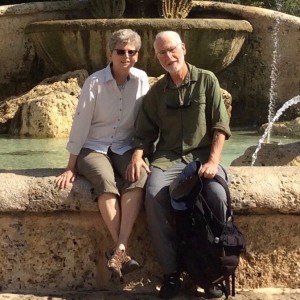
Drs. Howard Topoff and Carol Simon have been study leaders on natural history trips for over 30 years. Both are formerly professors at the City University of New York and Research Associates at the American Museum of Natural History. Howard Topoff has spent 40+ years researching the social behavior of animals. His field research has been conducted in Central and South America, Africa, and in the deserts and mountains of Arizona. In addition to his publications in scientific journals, his more popular articles have appeared in magazines such as Scientific American and Natural History. His research has been featured on National Geographic Television, and Scientific American Frontiers. Carol Simon is broadly trained in ecology, behavior and evolution. Her research on the social behavior of reptiles has taken her to many areas of North and Central America. Her current field research on reptile behavior is based in the Chiricahua Mountains of Arizona. As an added bonus, Carol and Howard provide multimedia presentations that provide in-depth insights into the natural history of the regions visited.
Other trips with Drs. Howard Topoff & Carol Simon
-
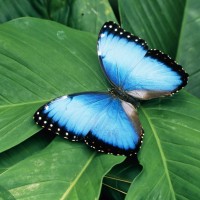 Panama: Intro to Tropical BiodiversitySeptember 24 - October 2, 2026
Panama: Intro to Tropical BiodiversitySeptember 24 - October 2, 2026
-
-
Andrea Molina

Andrea is an Ecuadorian bird guide who has been guiding since 2006. She started as a local guide at the Bellavista Reserve cloud forest in Ecuador and then was recruited by Neblina Forest as a guide in 2010. Since then, Andrea has trained in Brazil, Peru, and other locations in Ecuador. Her good energy and kind touch with clients, as well as her good ears and great eye for birds, ensures her groups have an excellent experience. Andrea lives in Ecuador with her family.
Guest Quote: *I’m writing to tell you how excellent our guide, Andrea Molina, was. She has an outstanding blend of knowledge, interpersonal skills, and professionalism, and is overall a cool person who is fun to be around. She really made the trip special.*Other trips with Andrea Molina
Essential Information +
Pace & Protocols +
Packing List +
Suggested Reading List +
Useful Links +
Photo credits coming soon.






